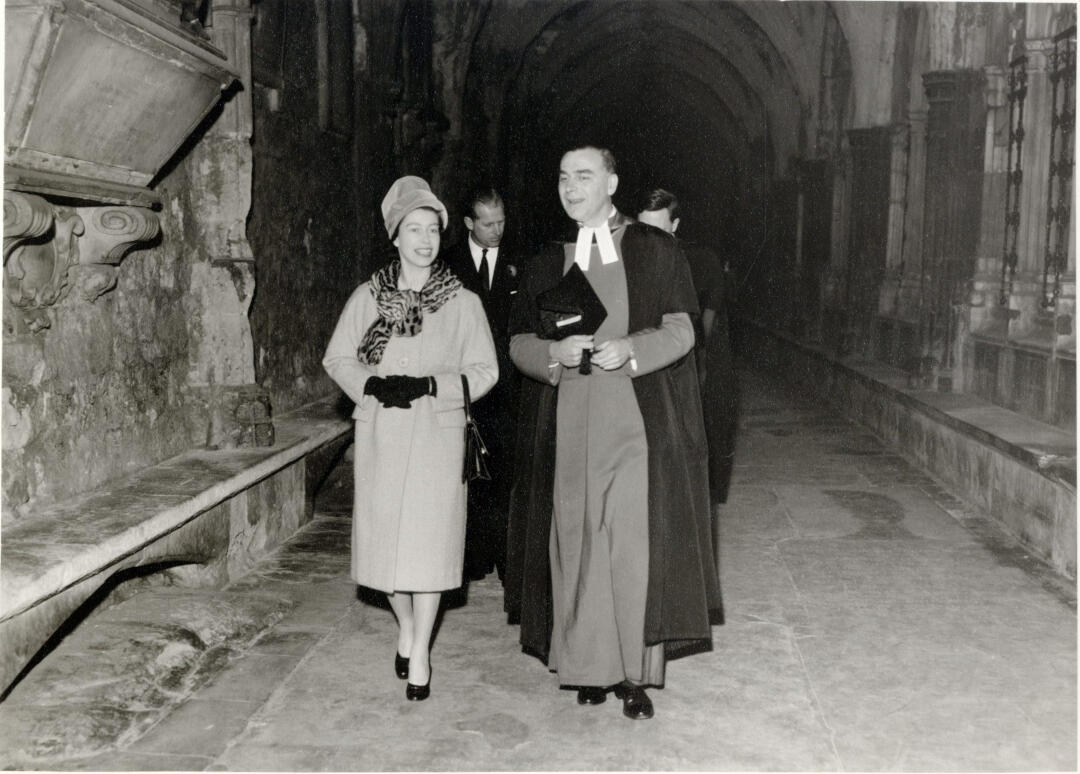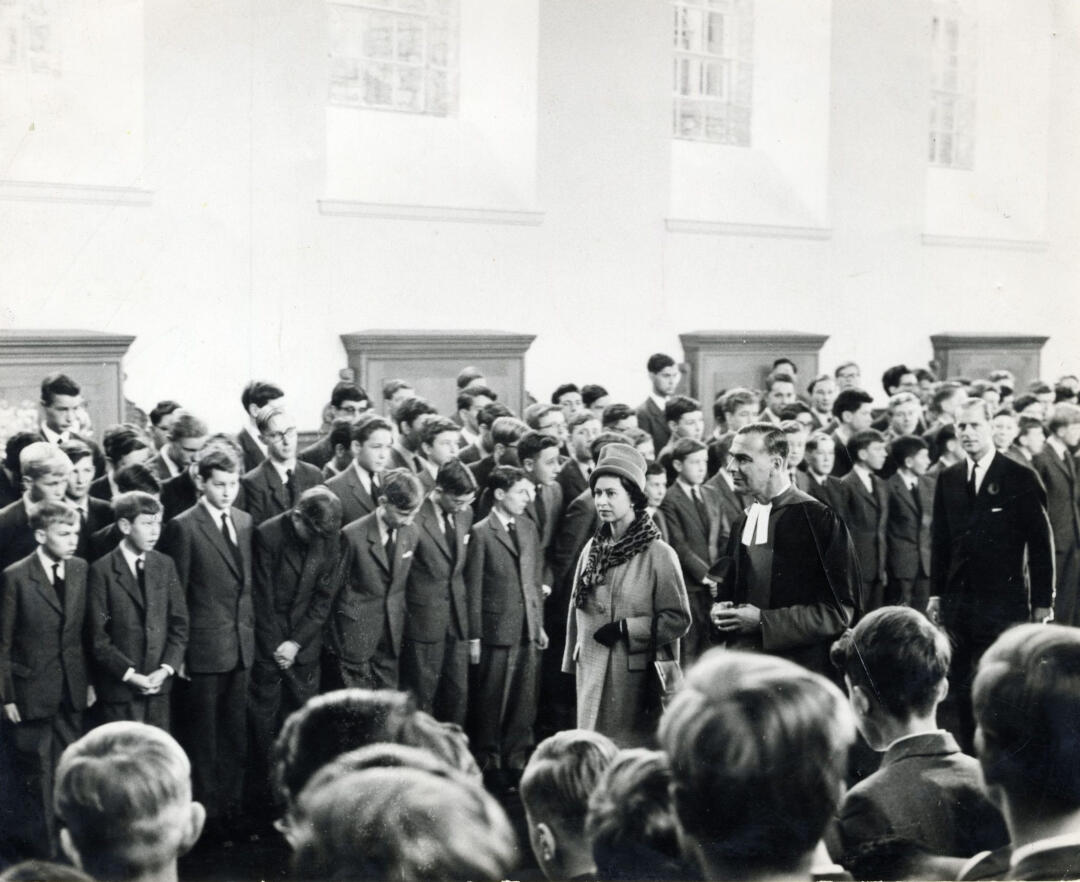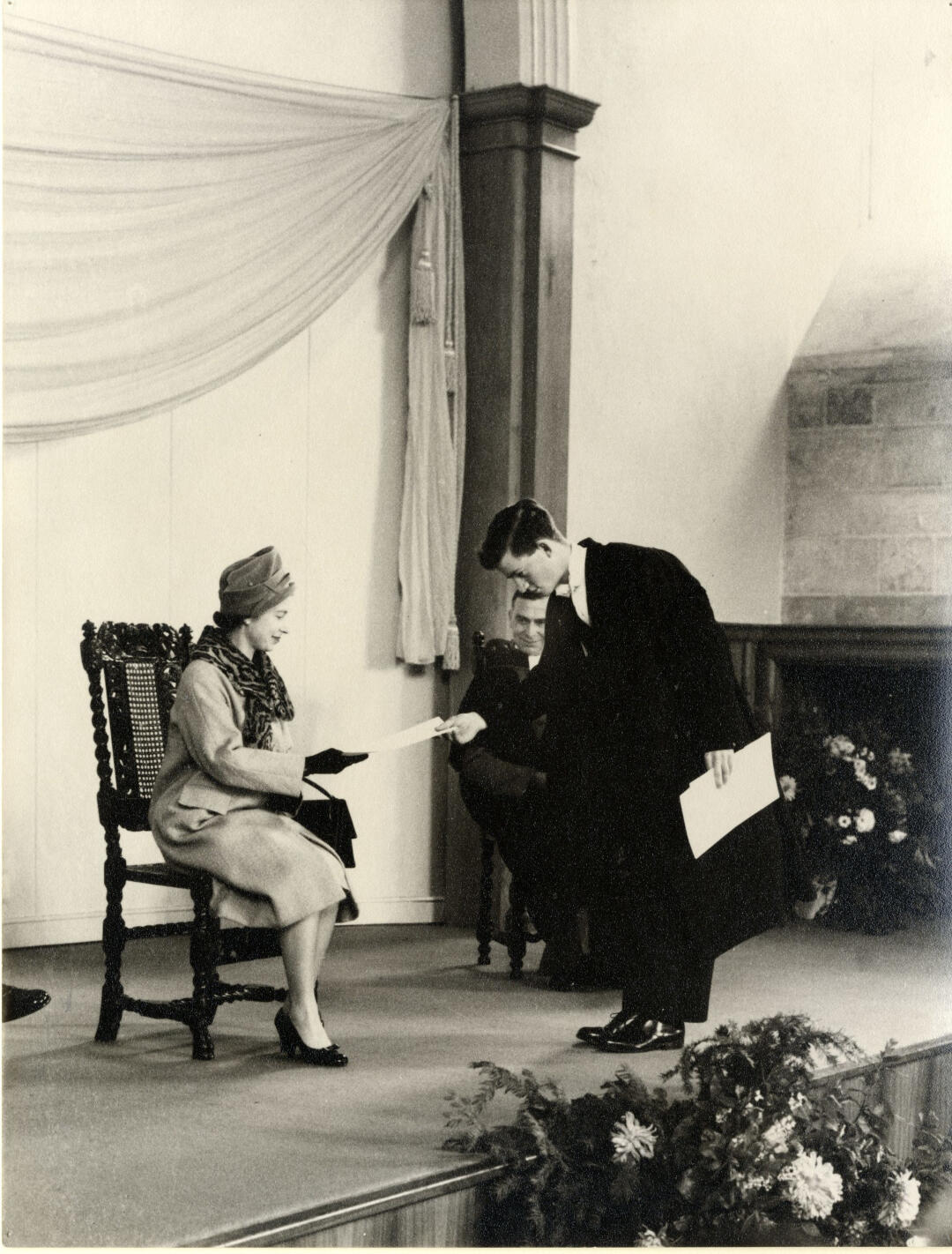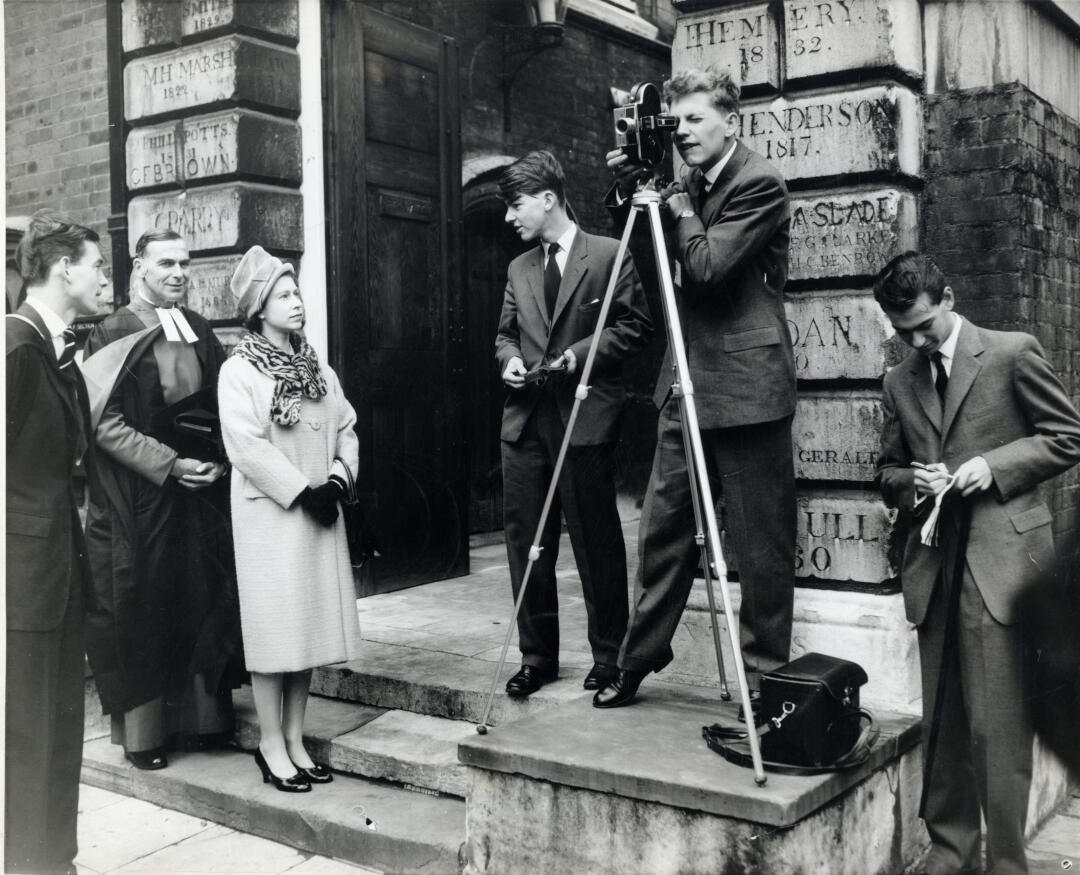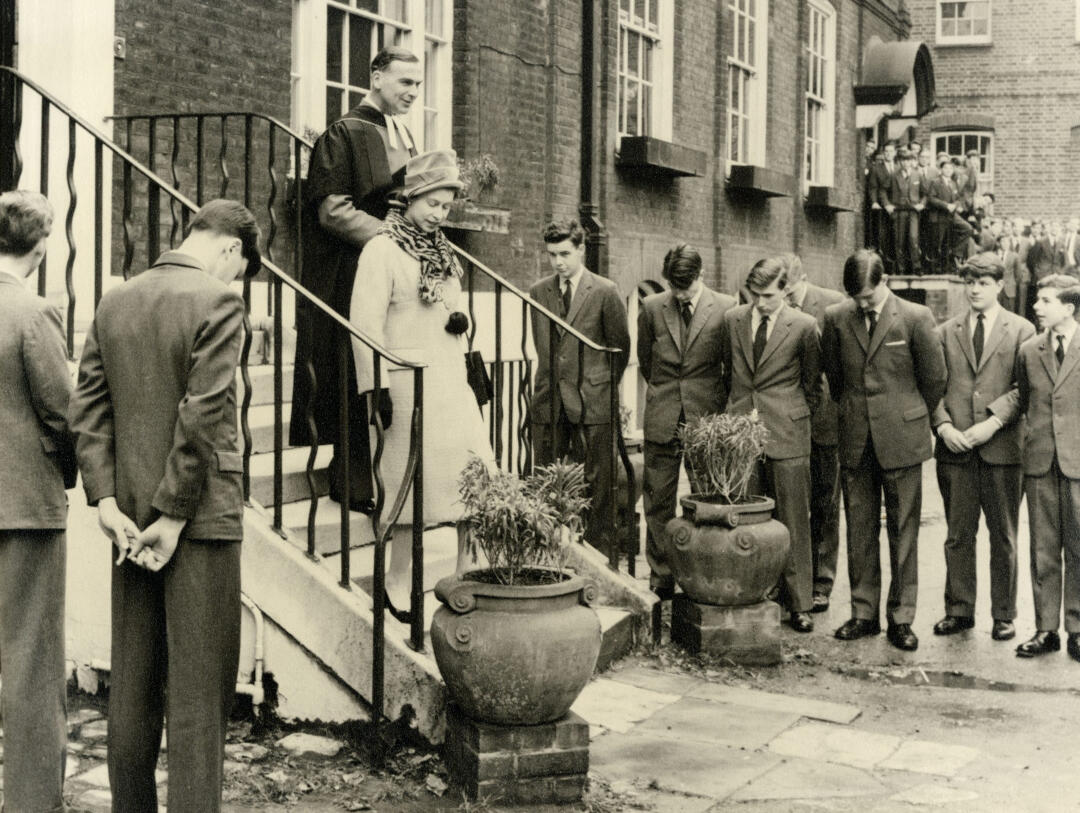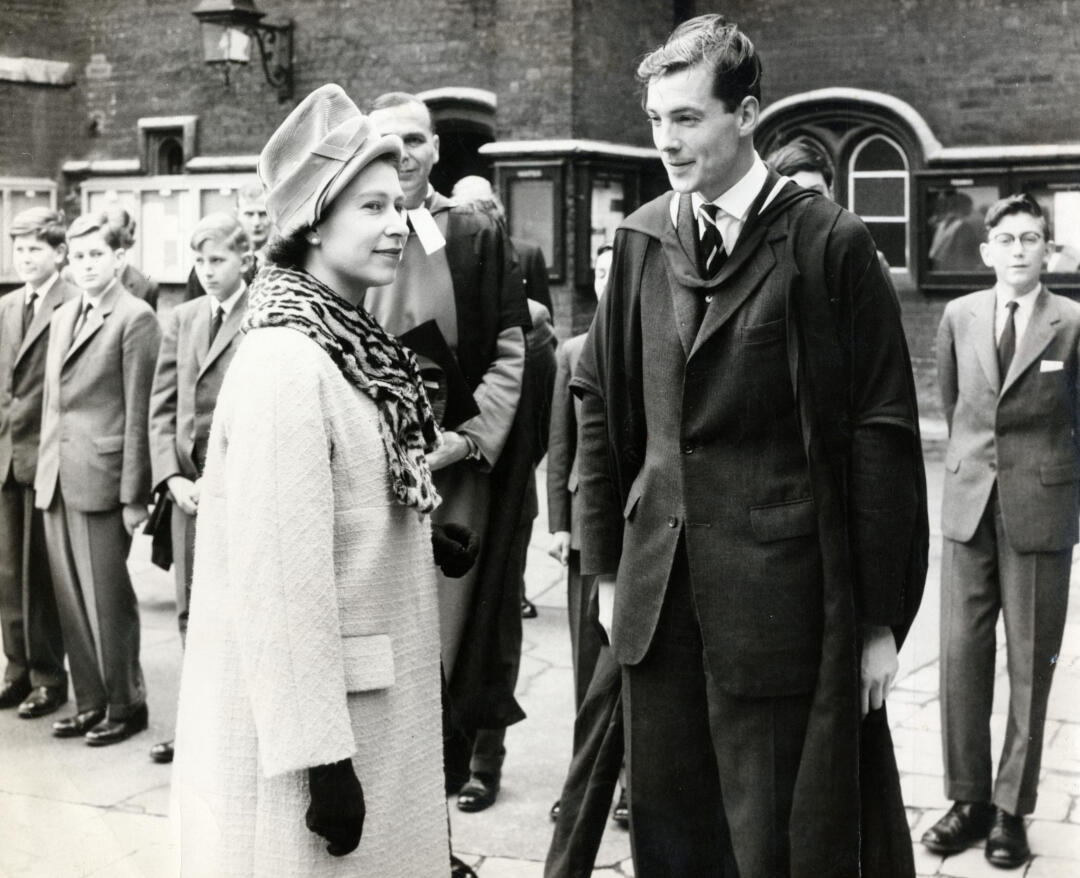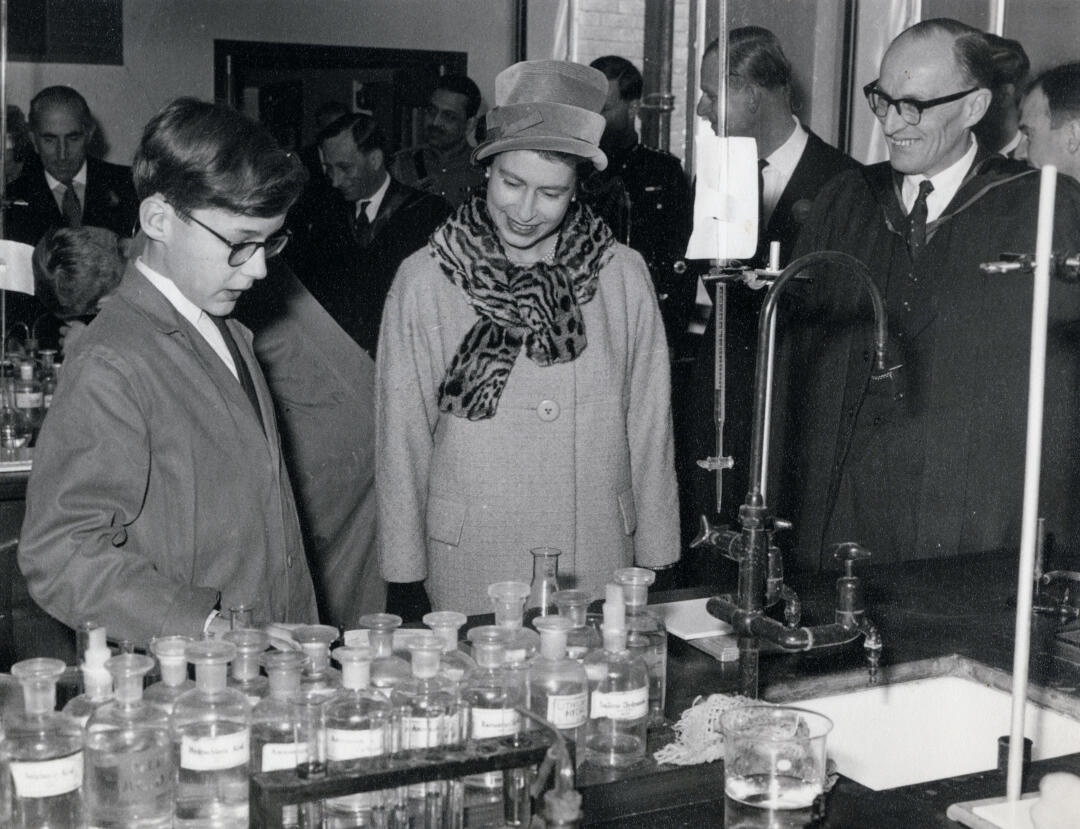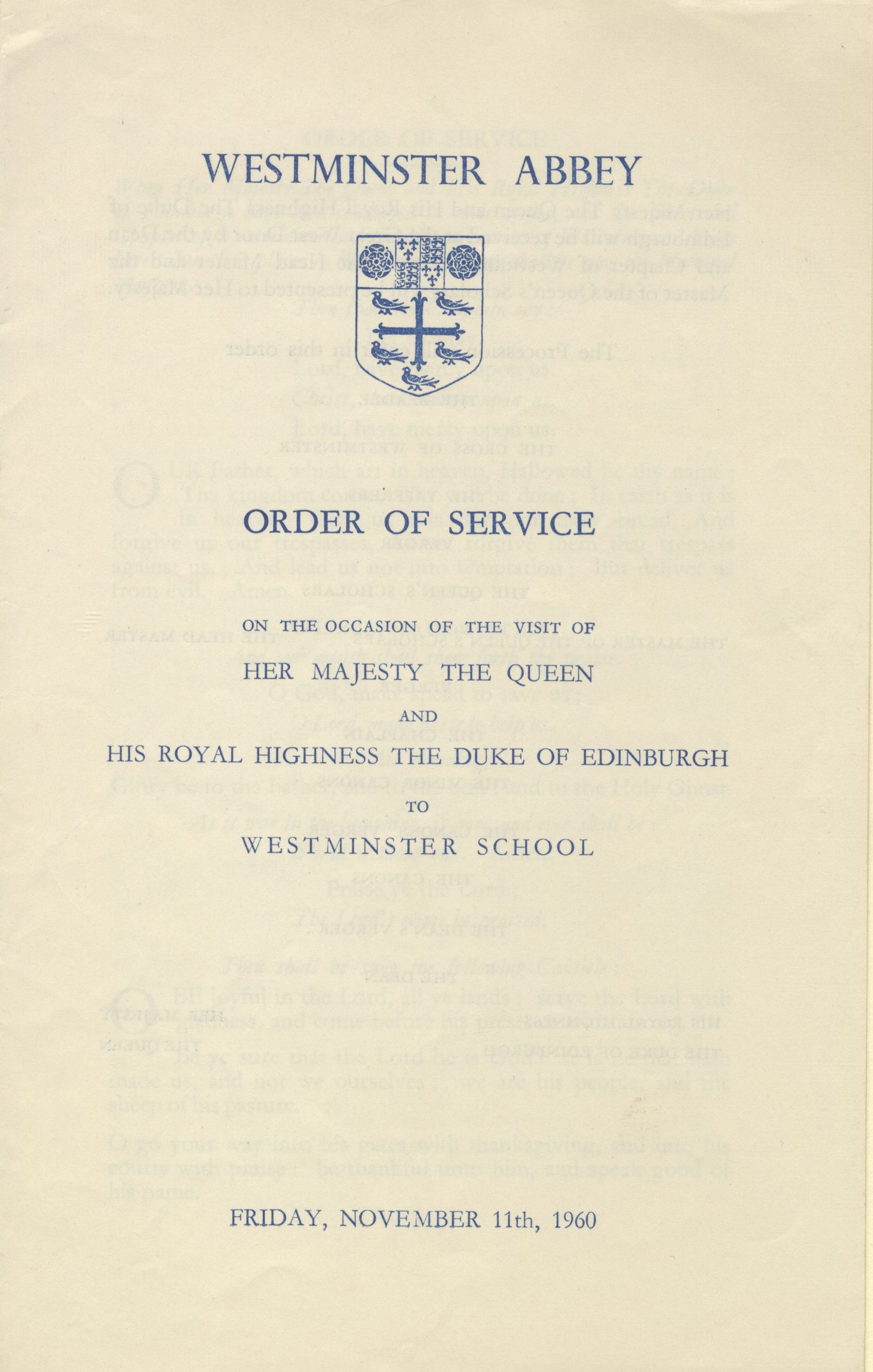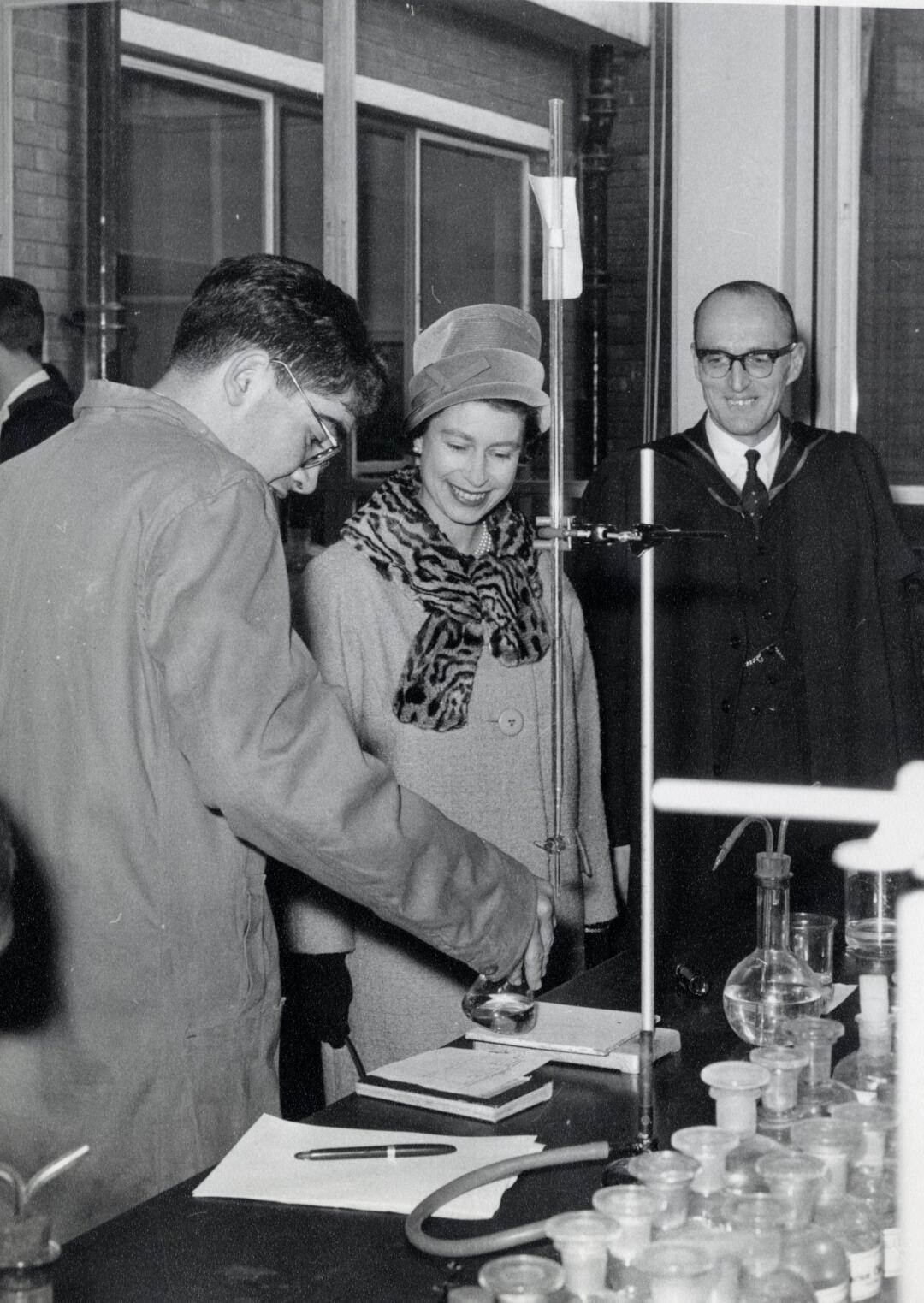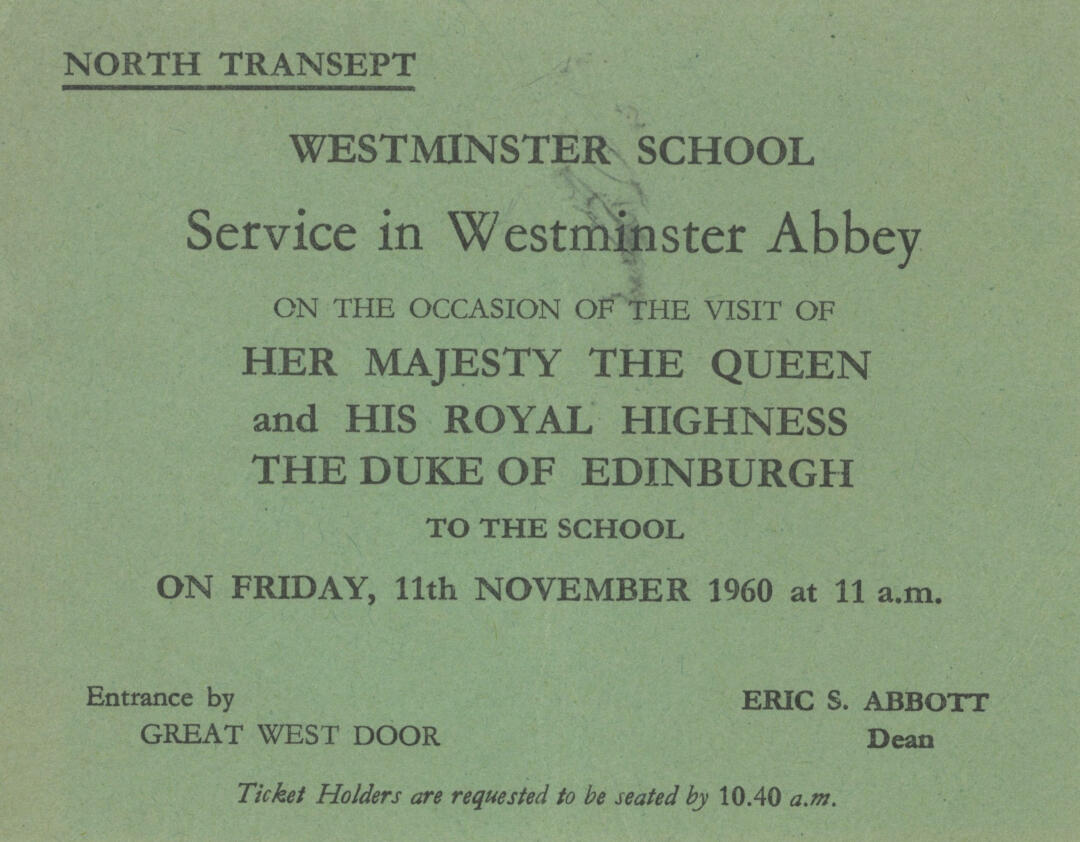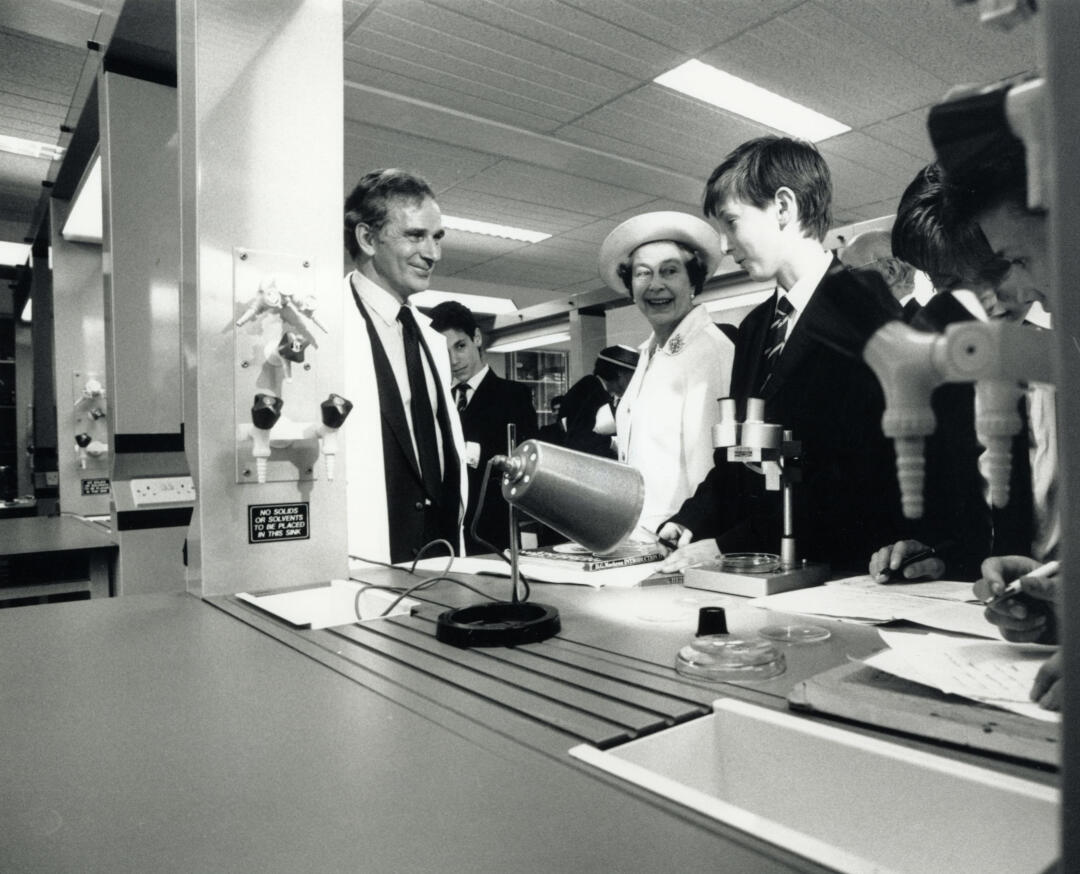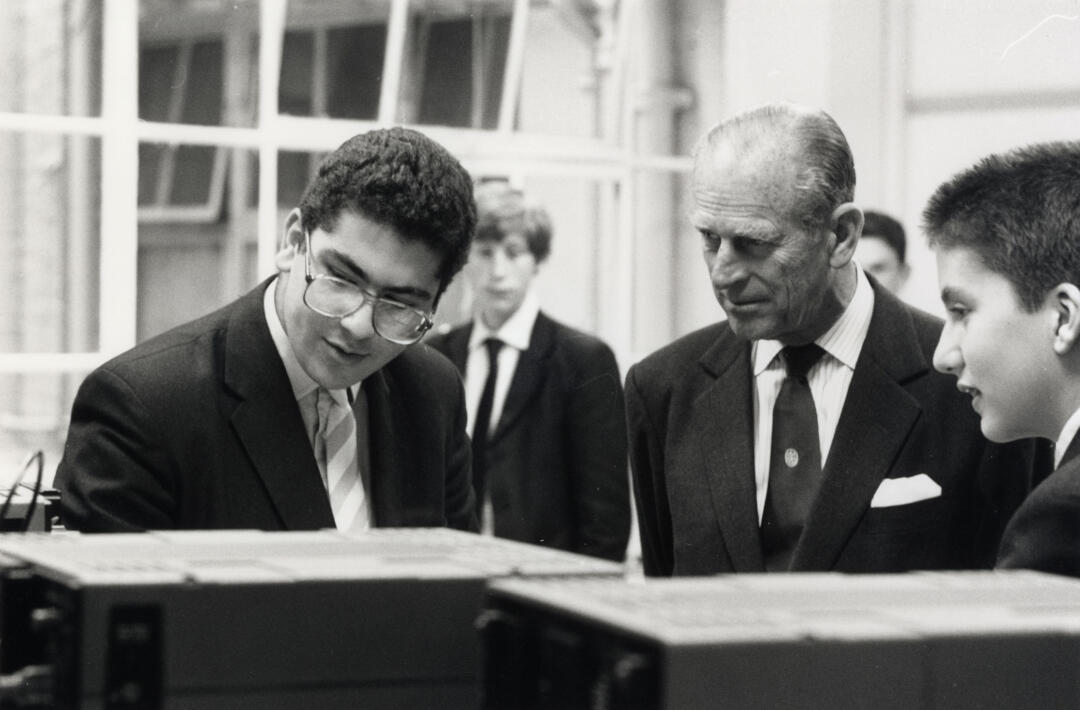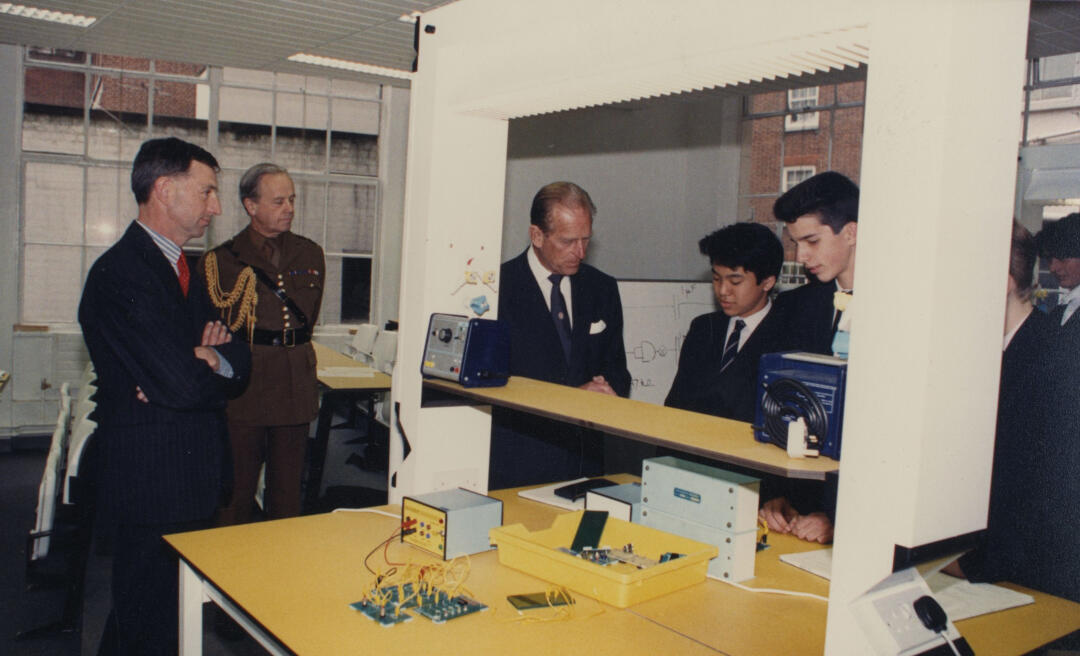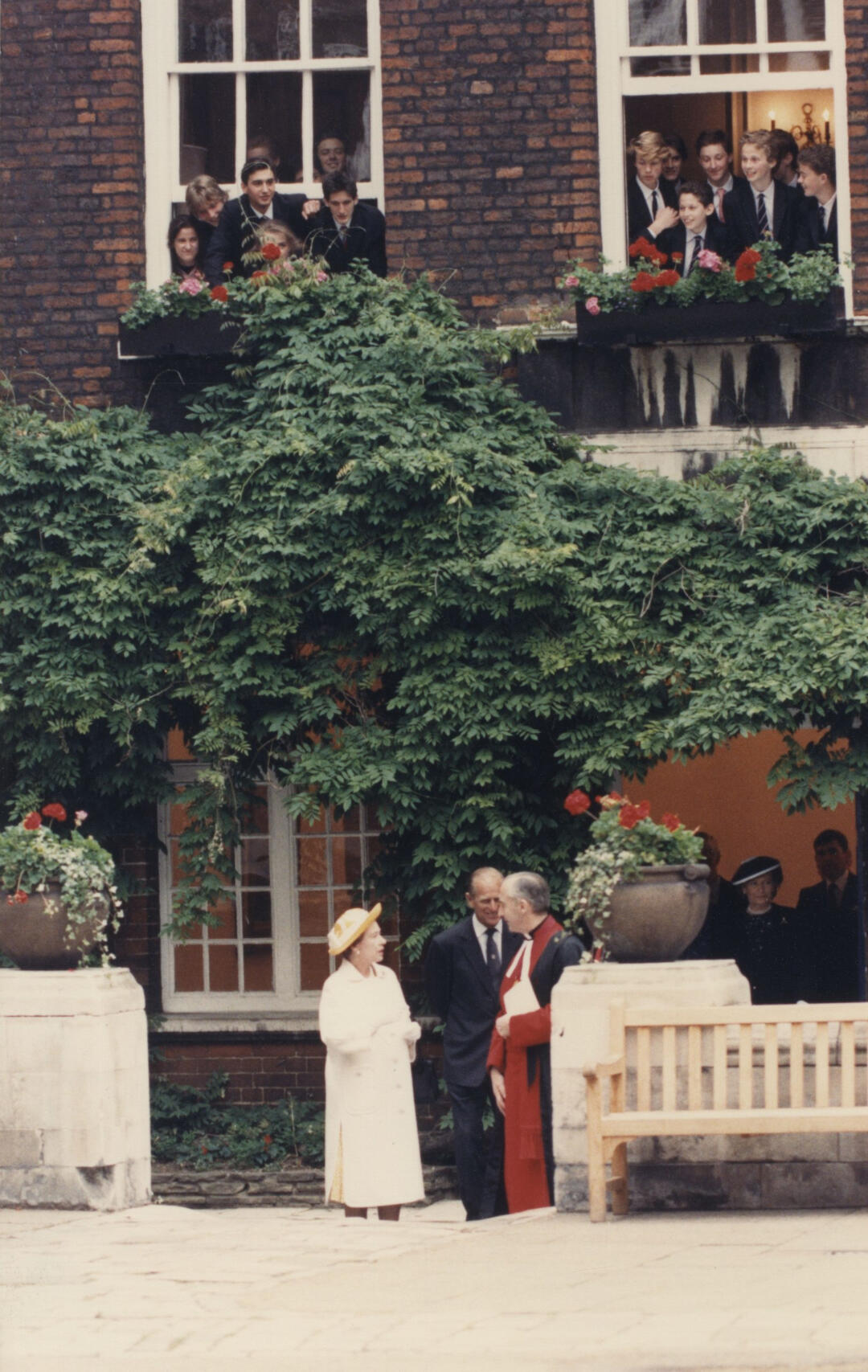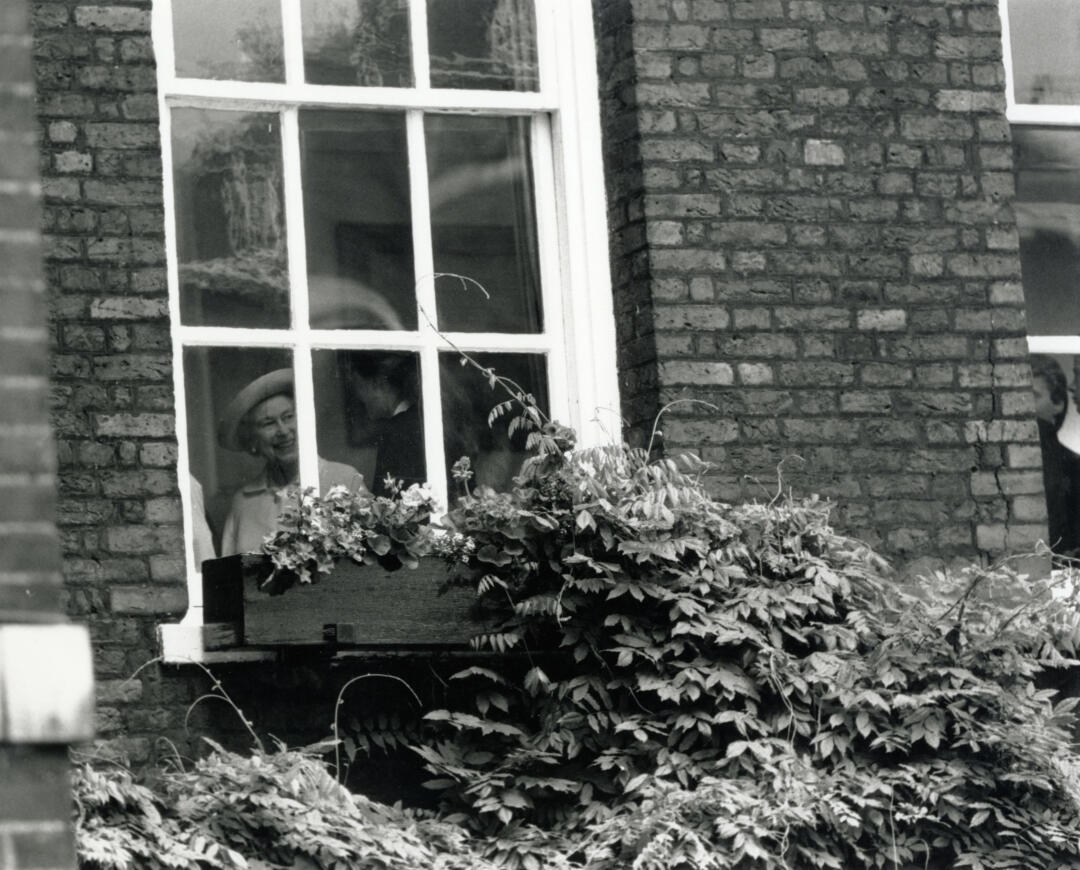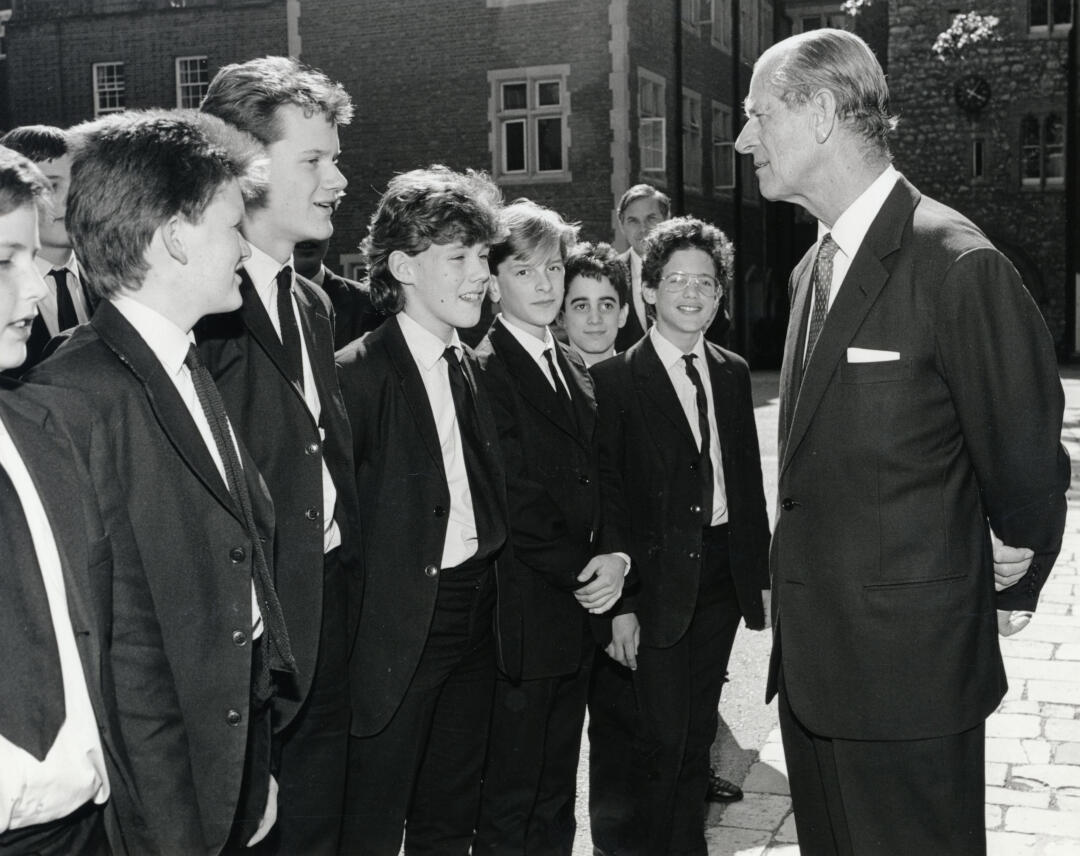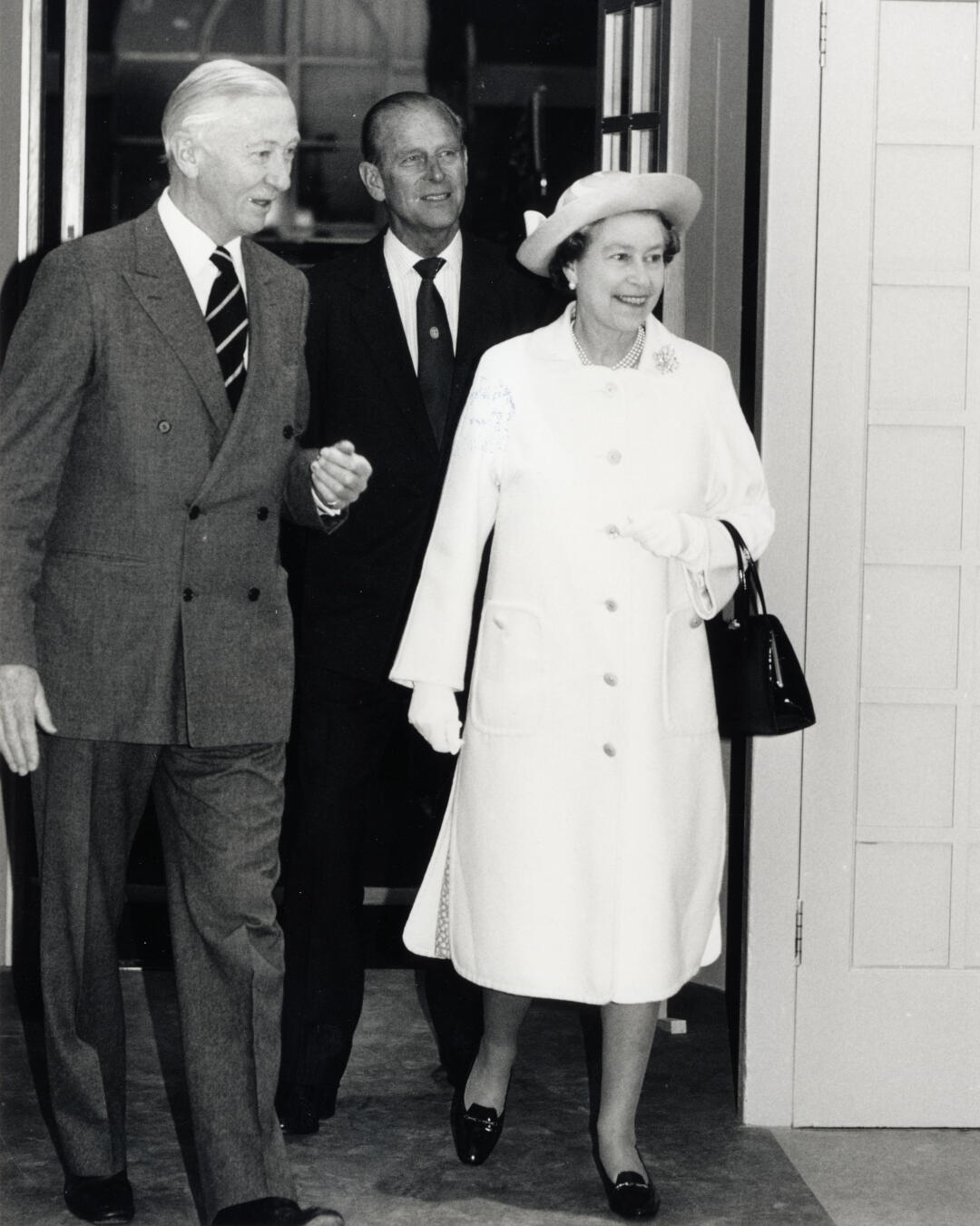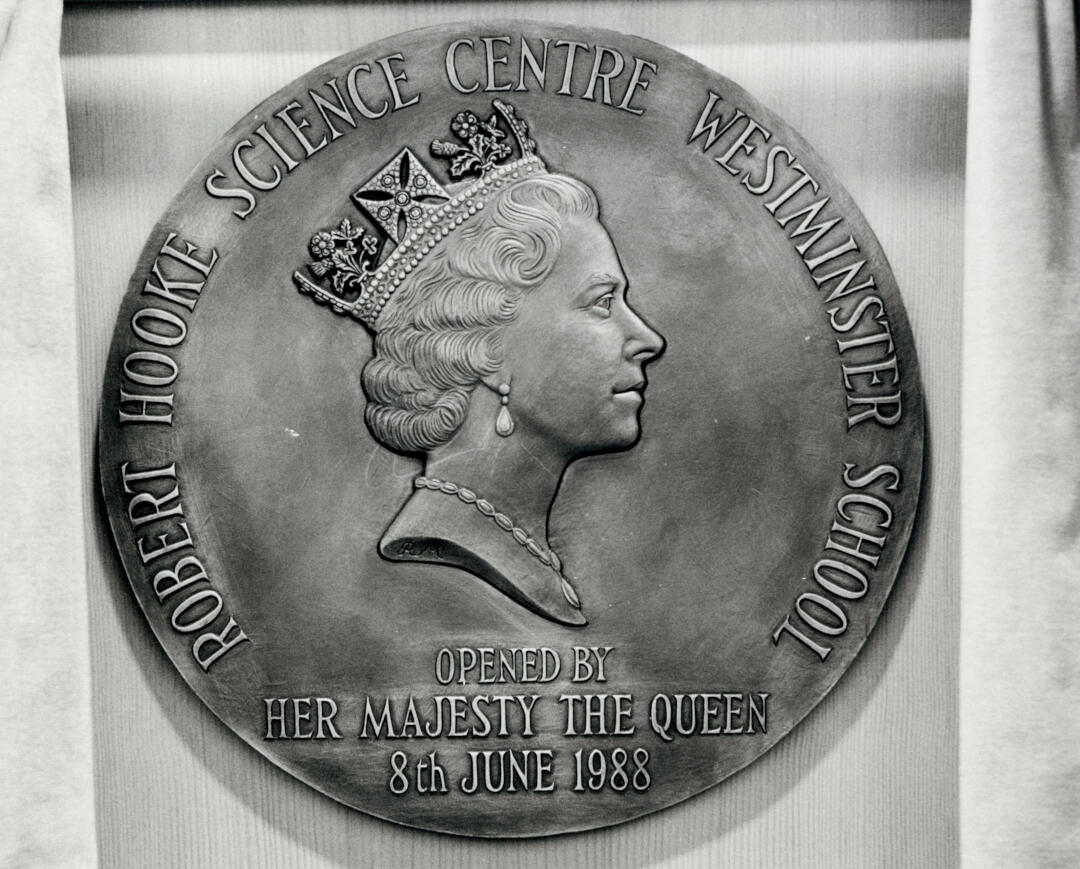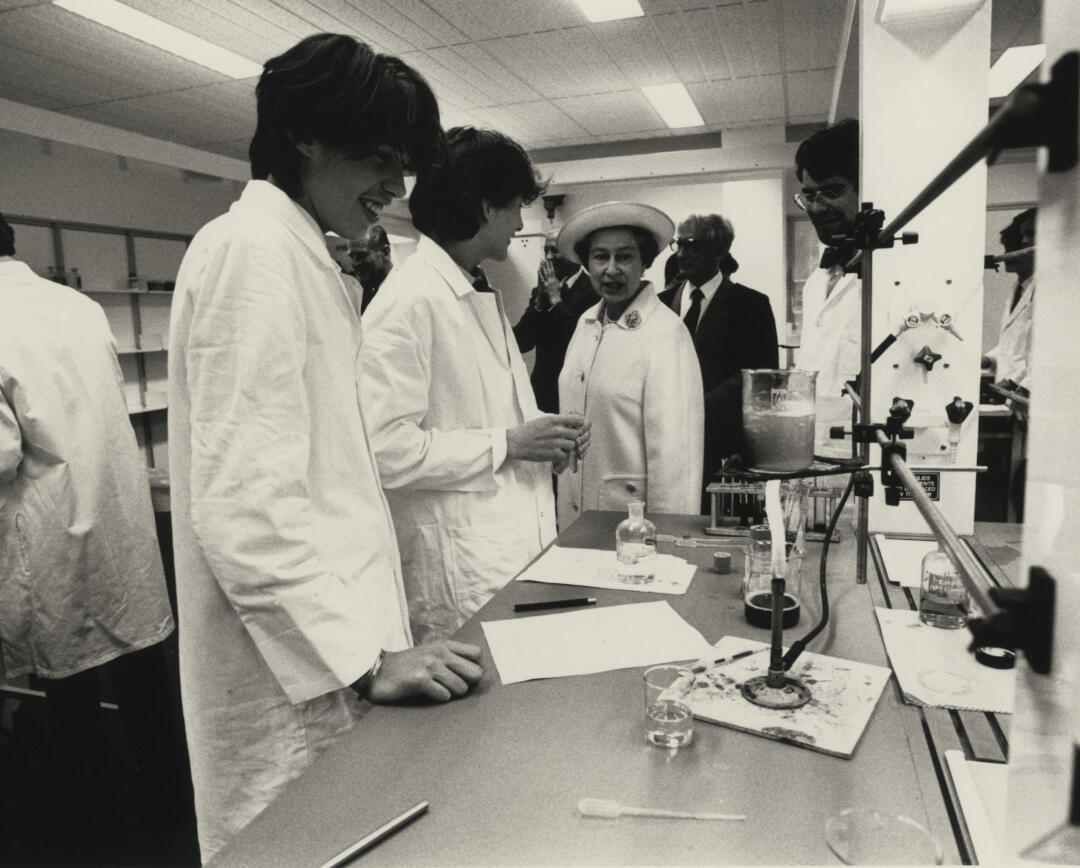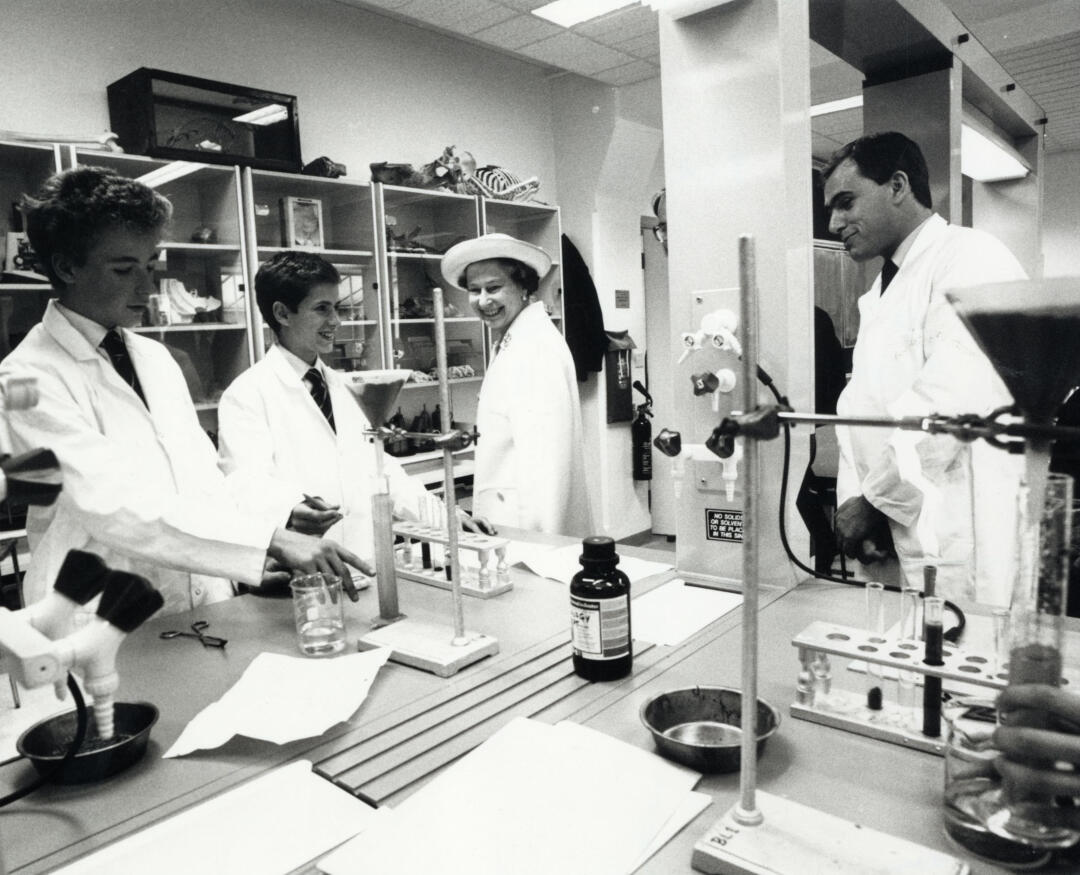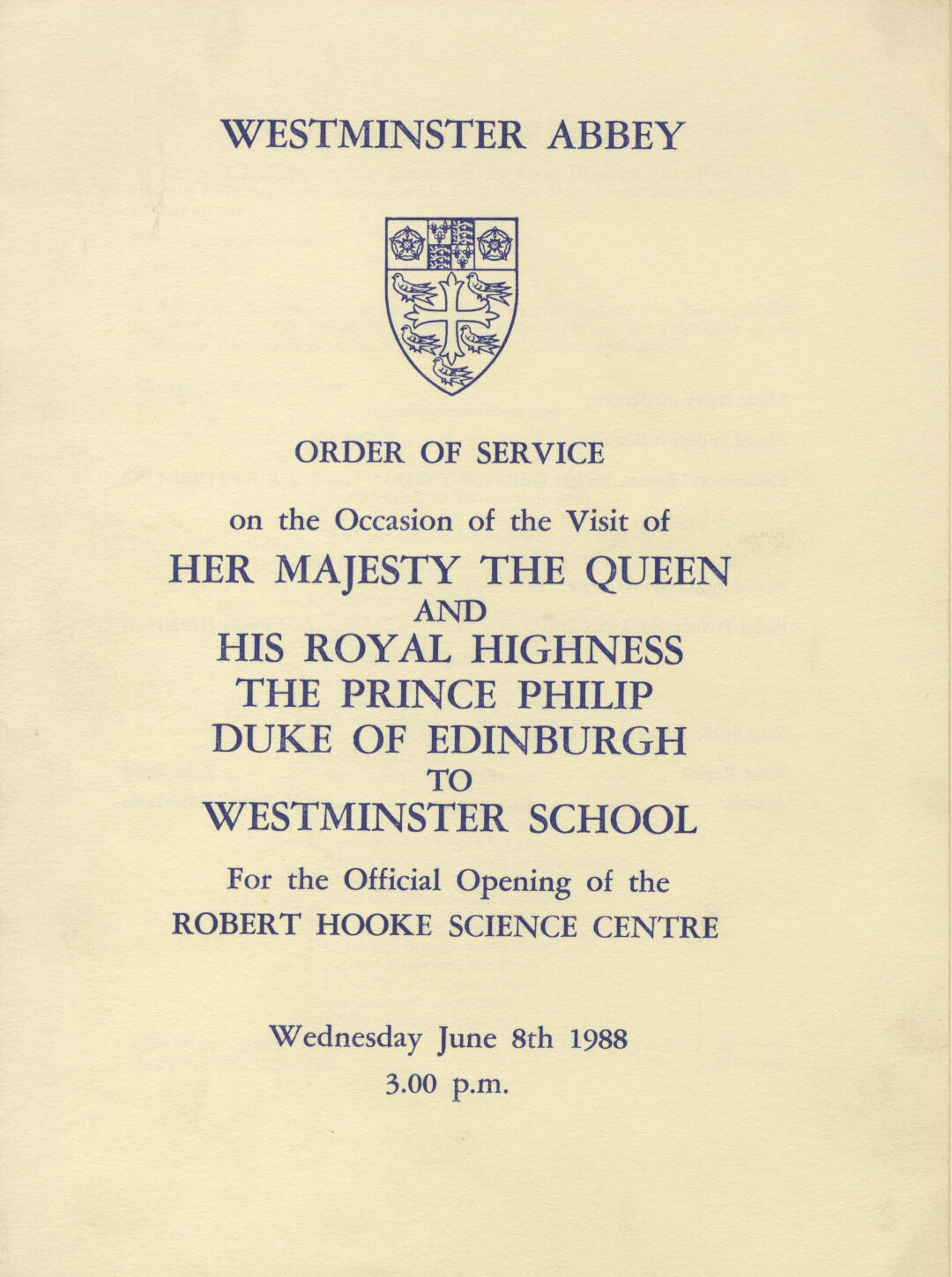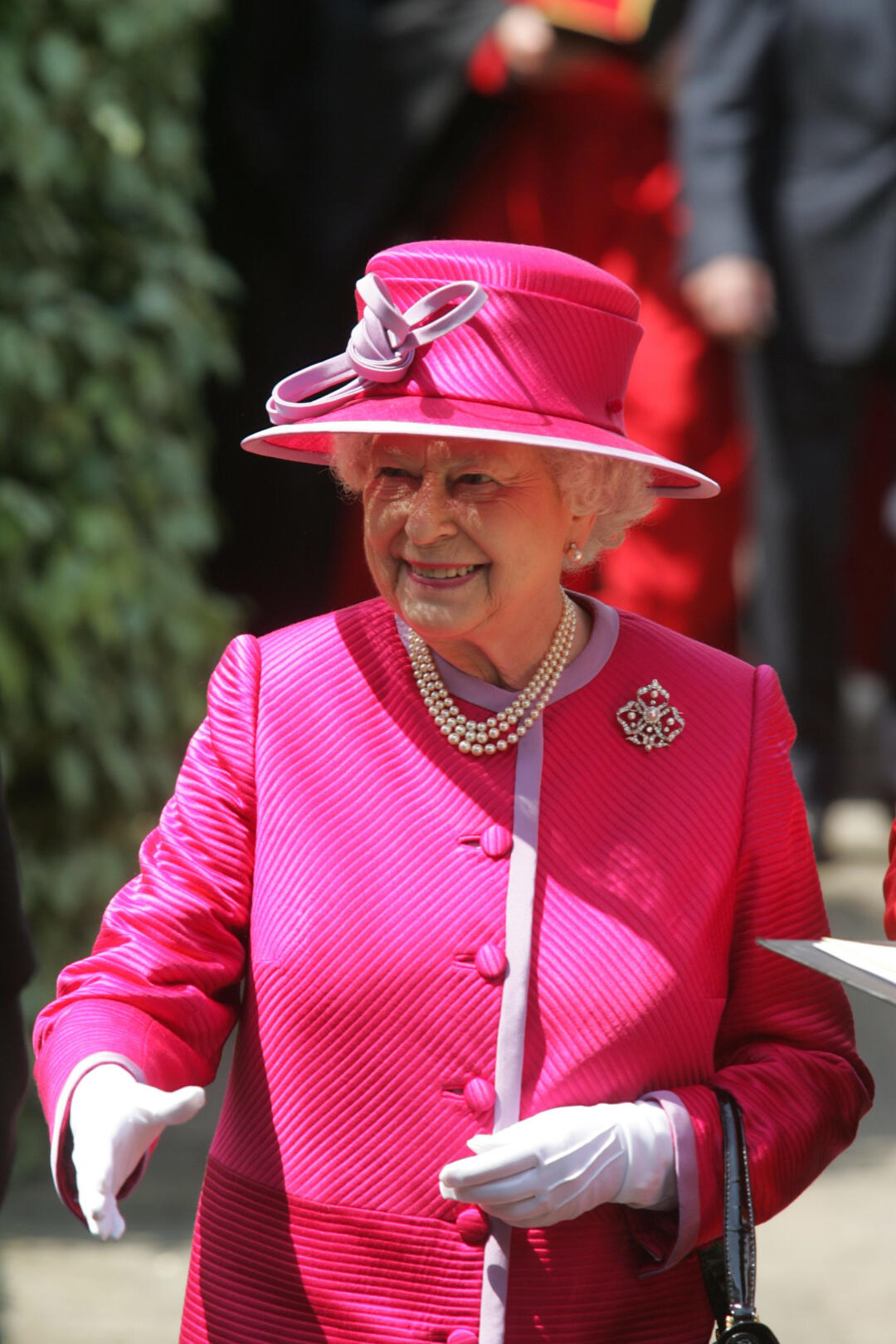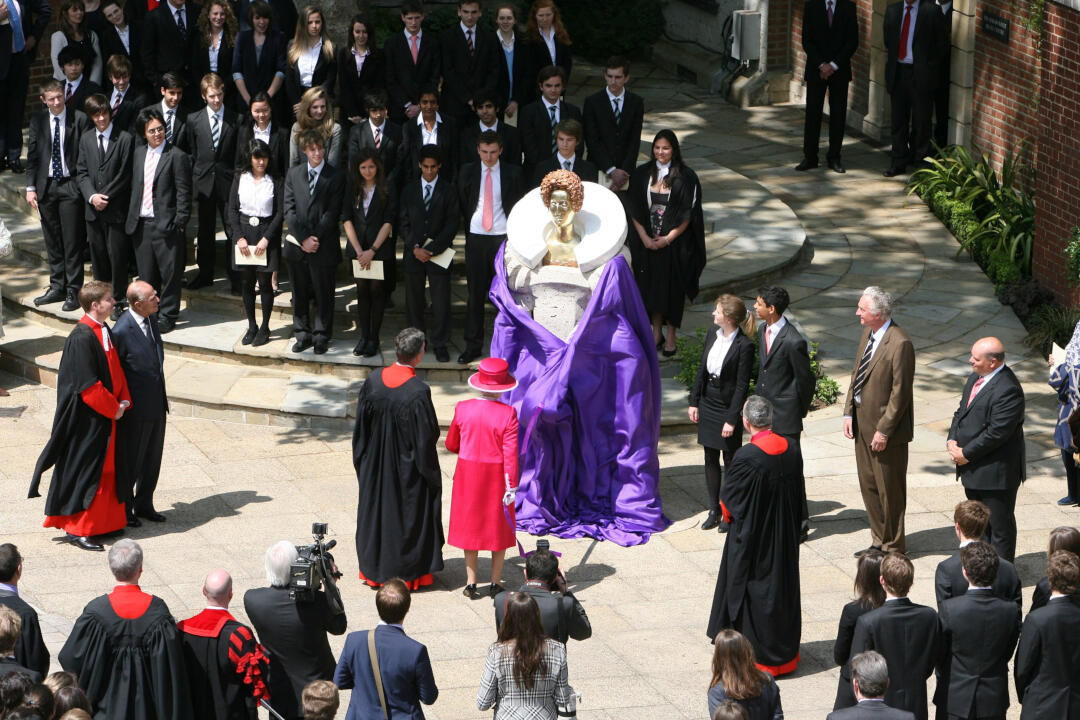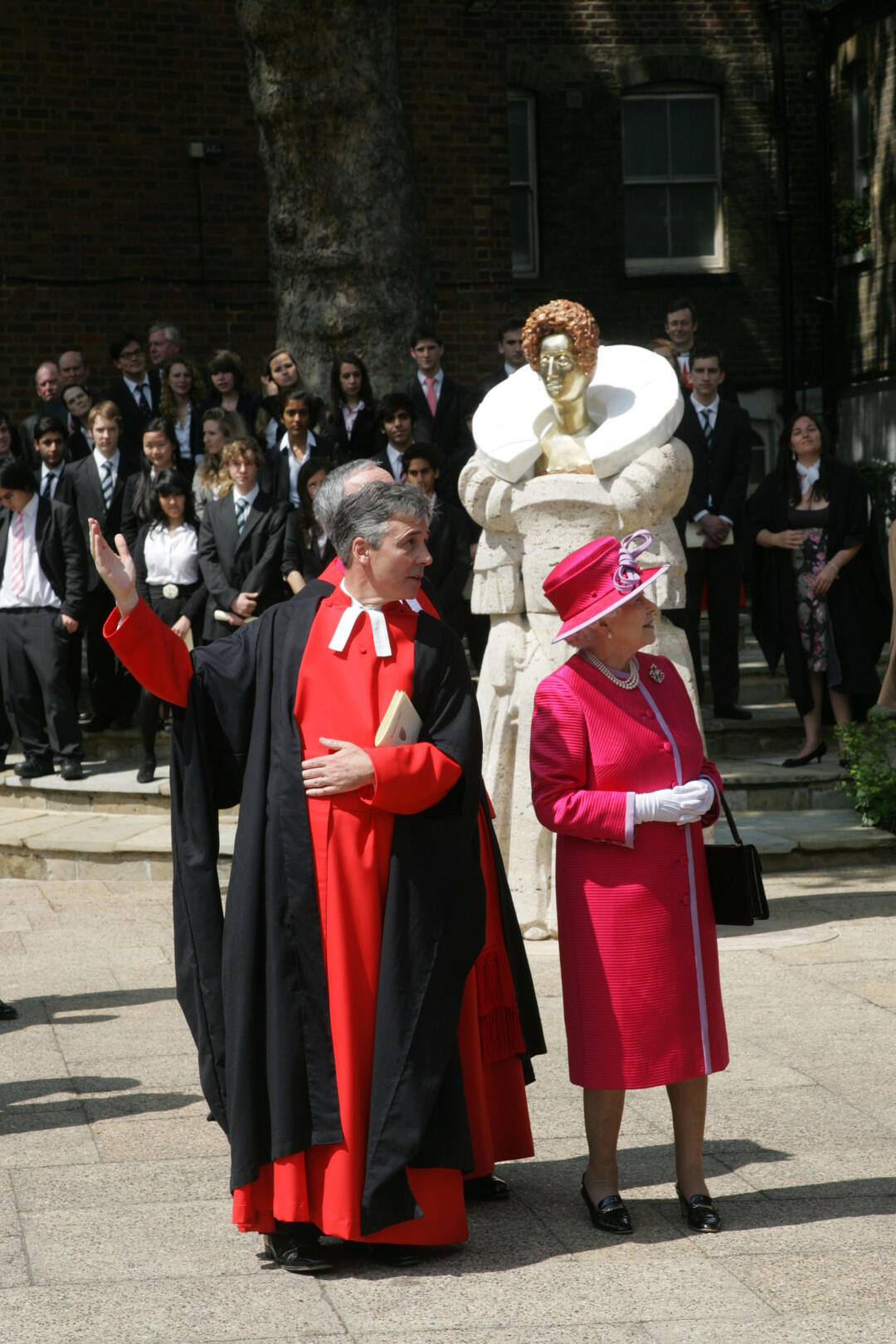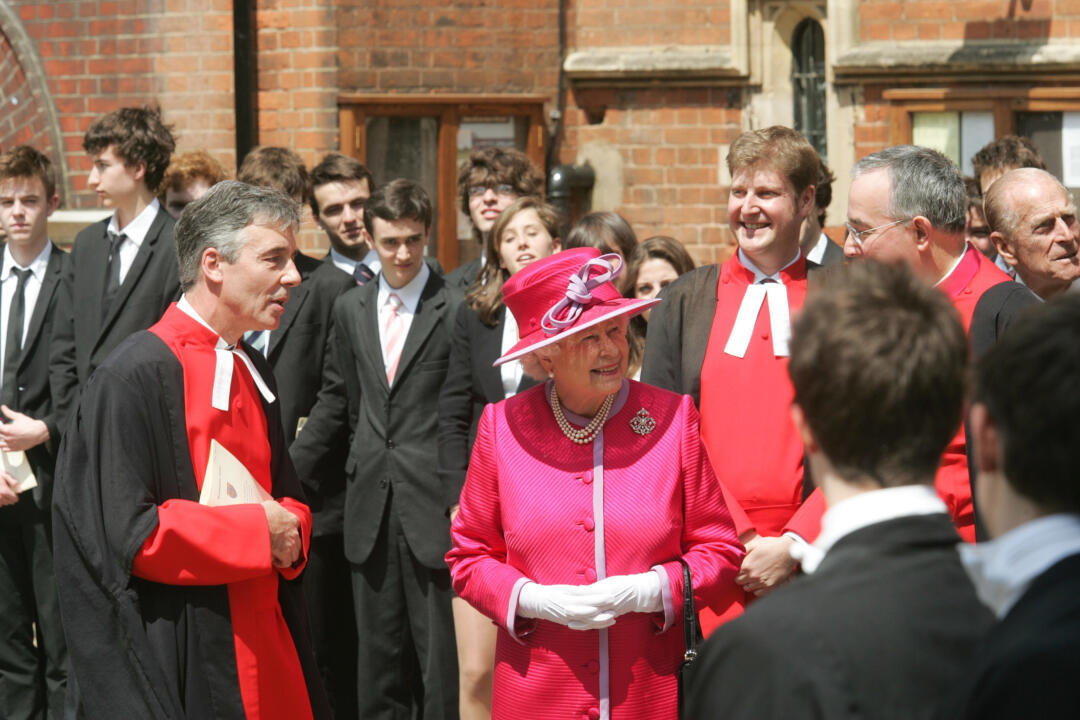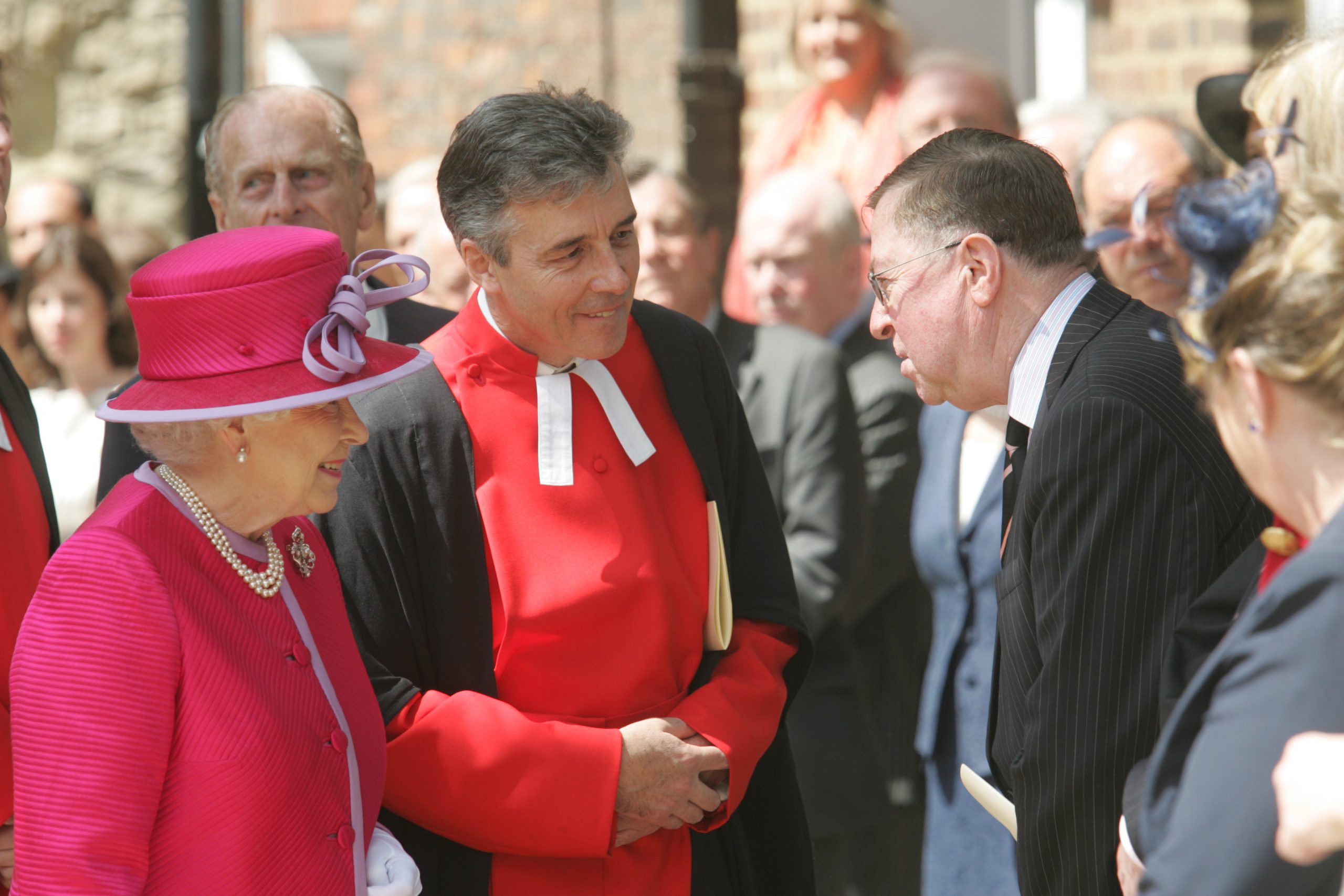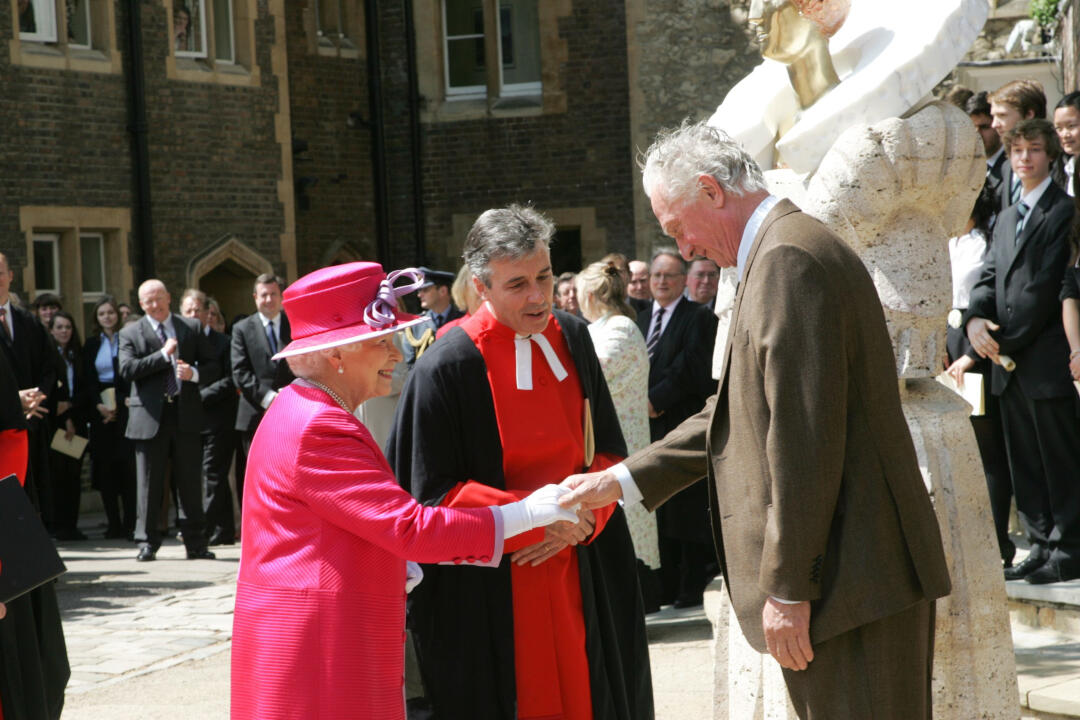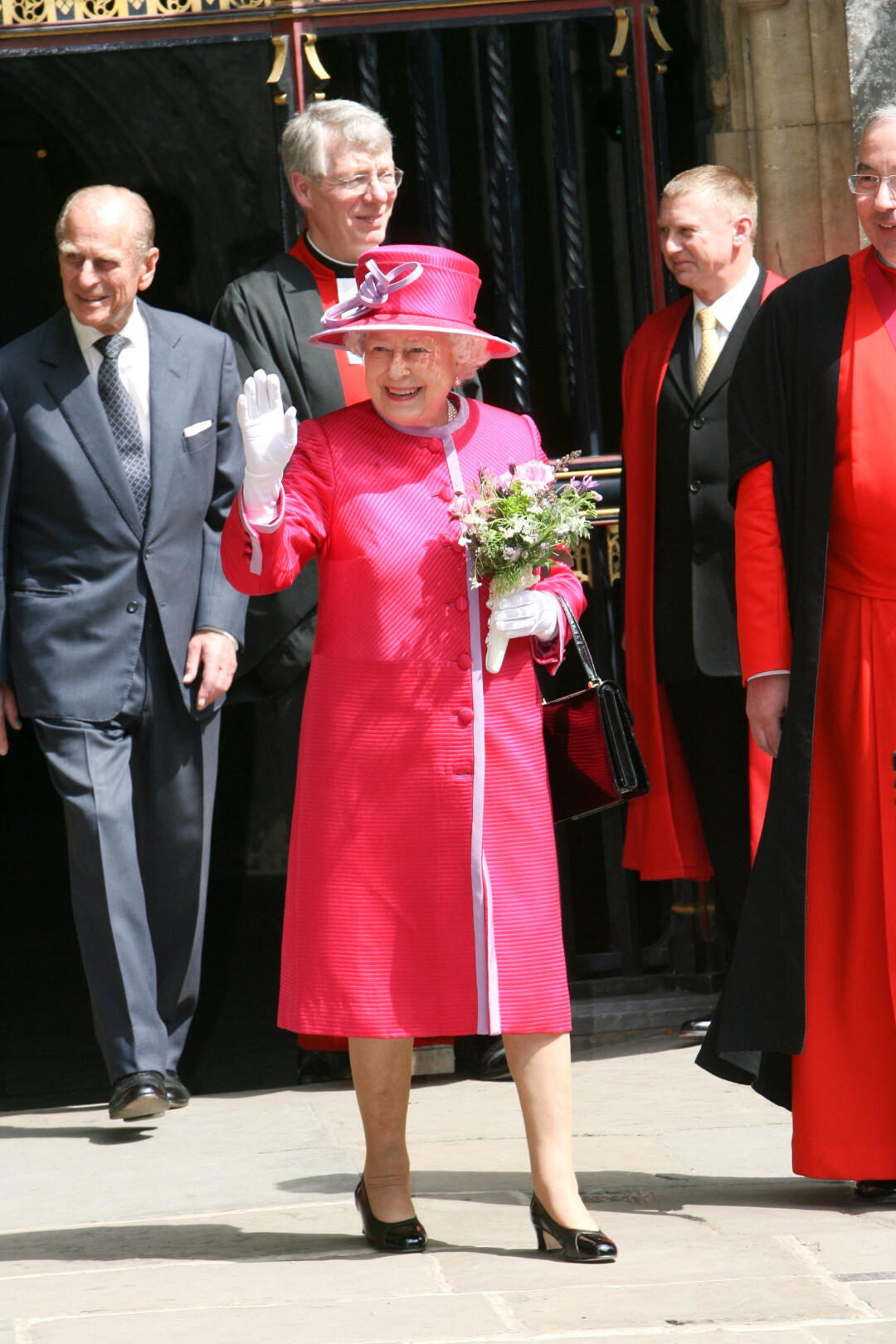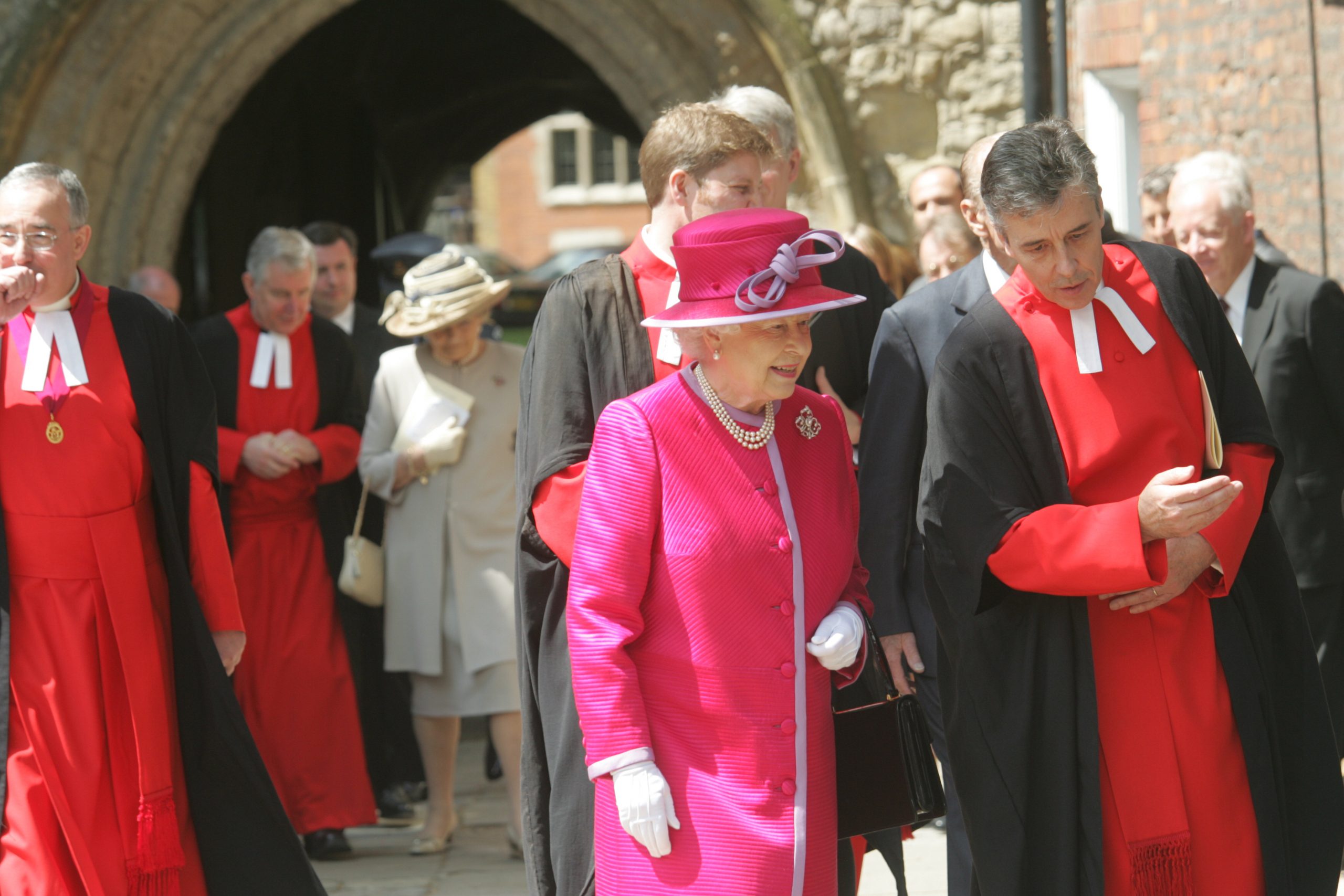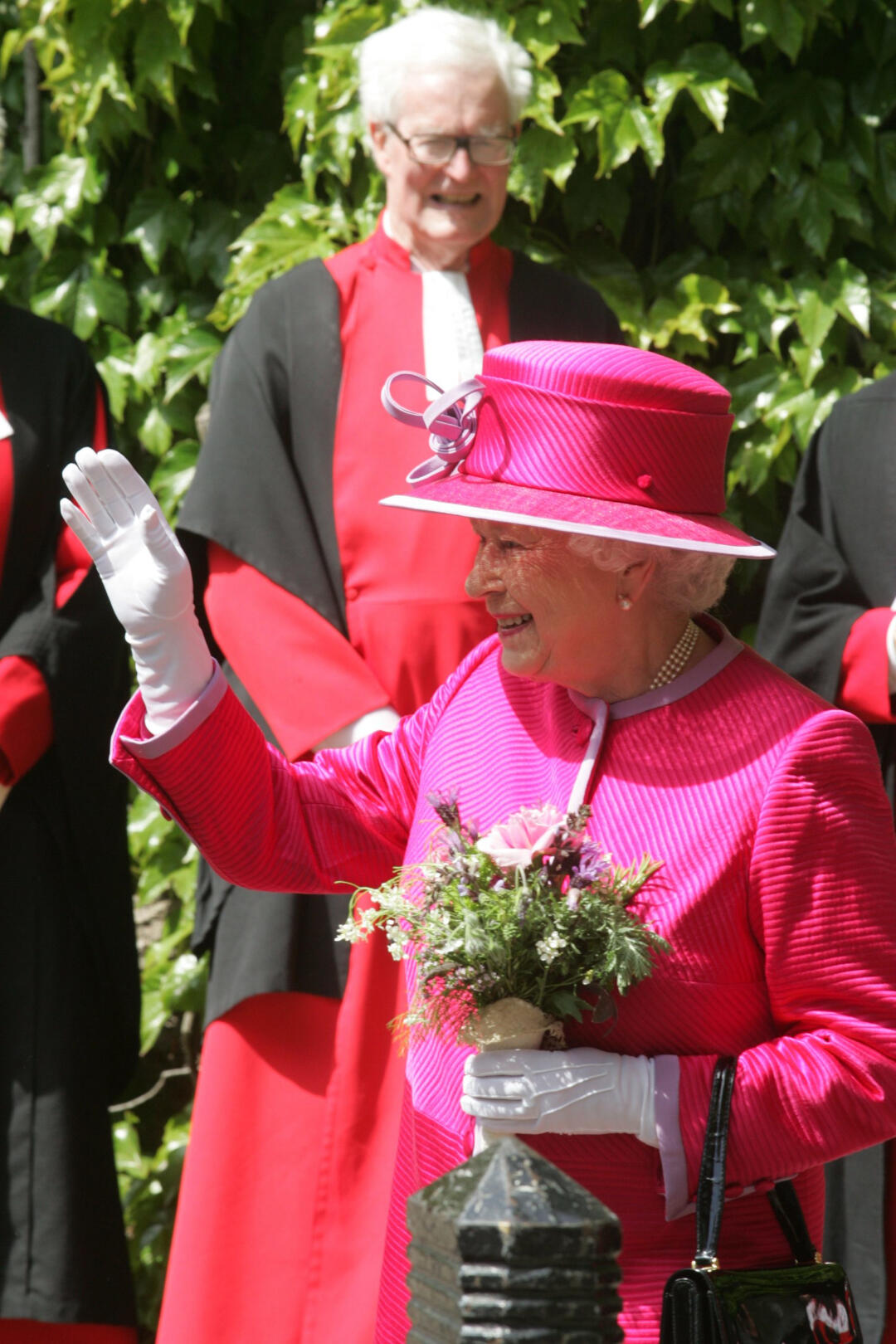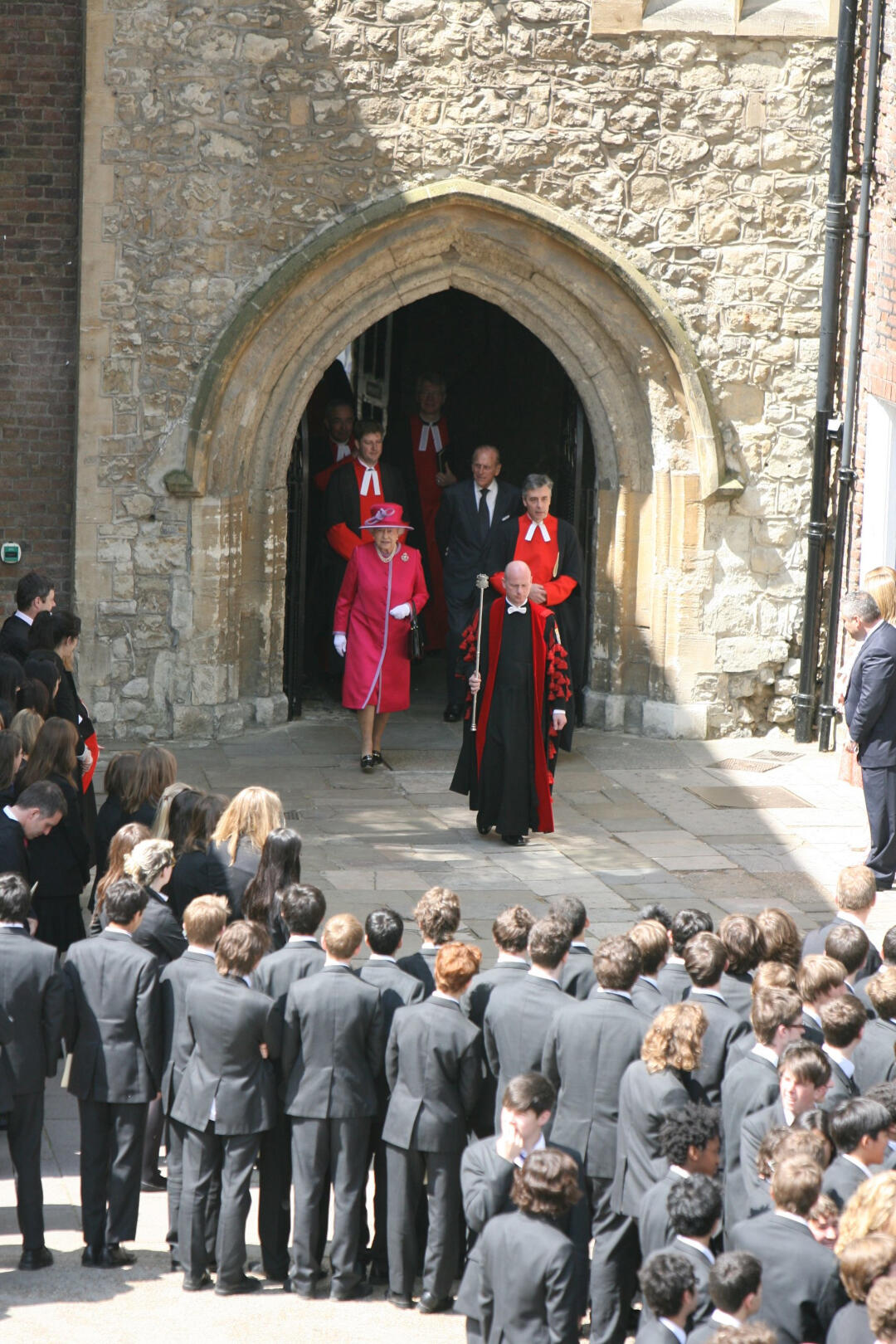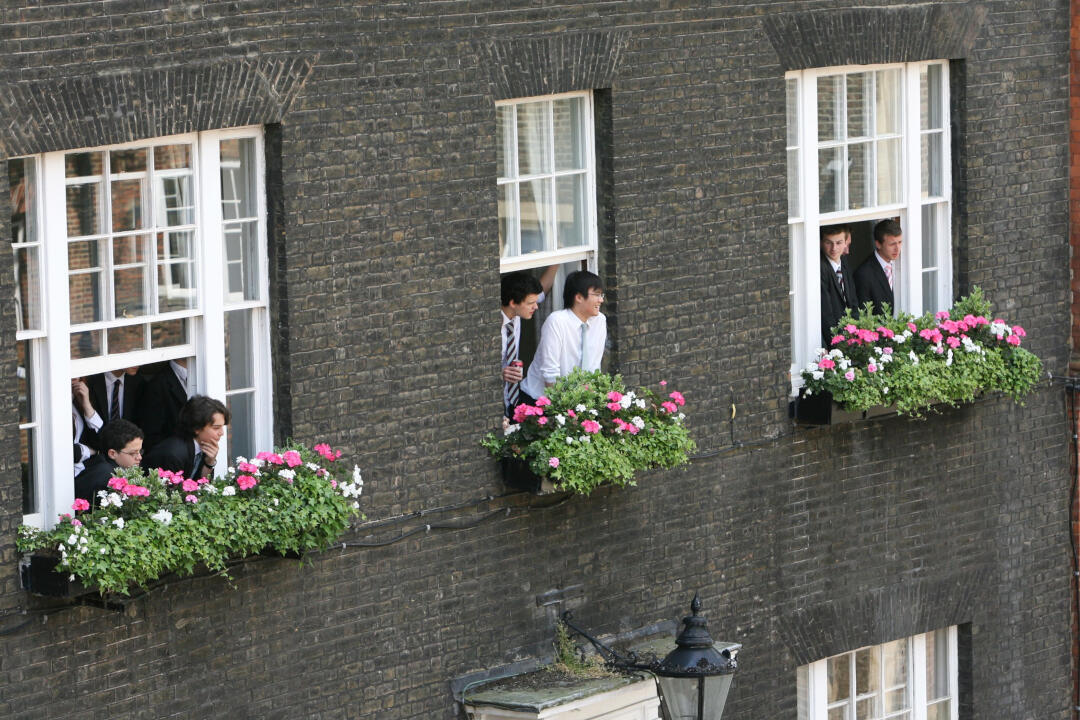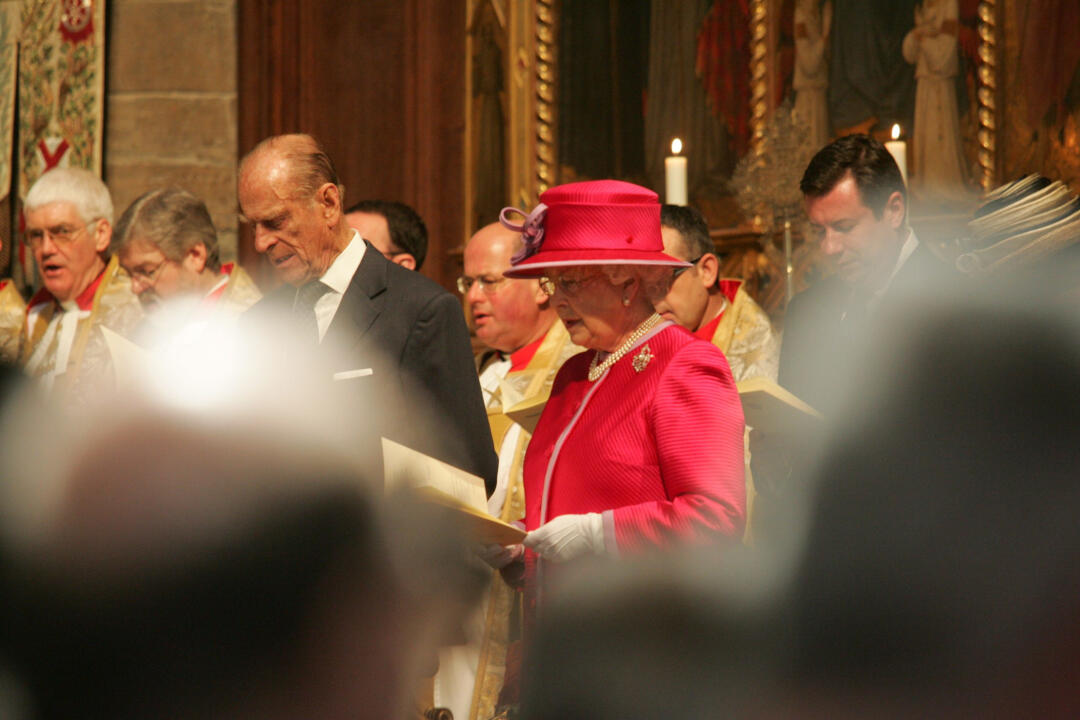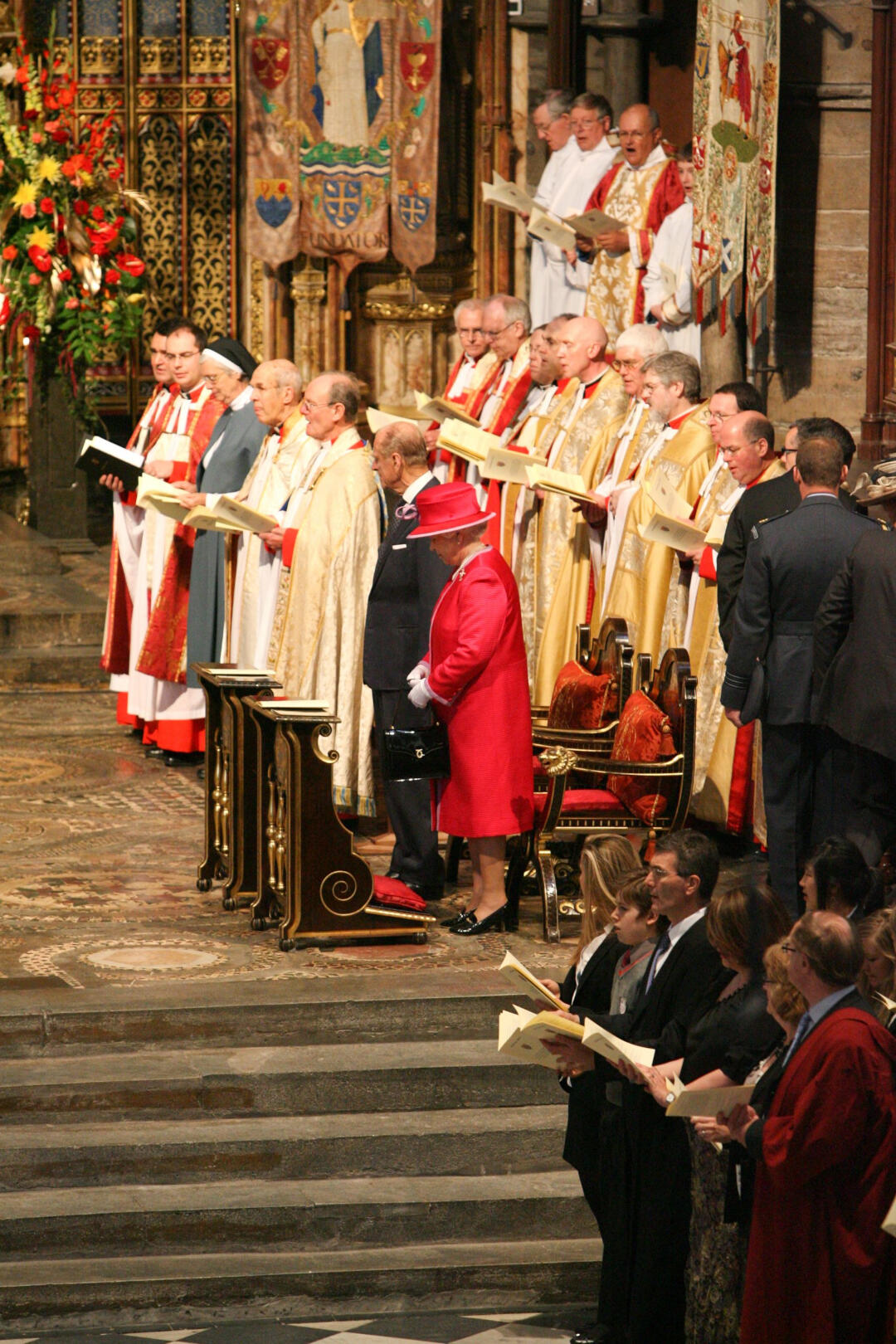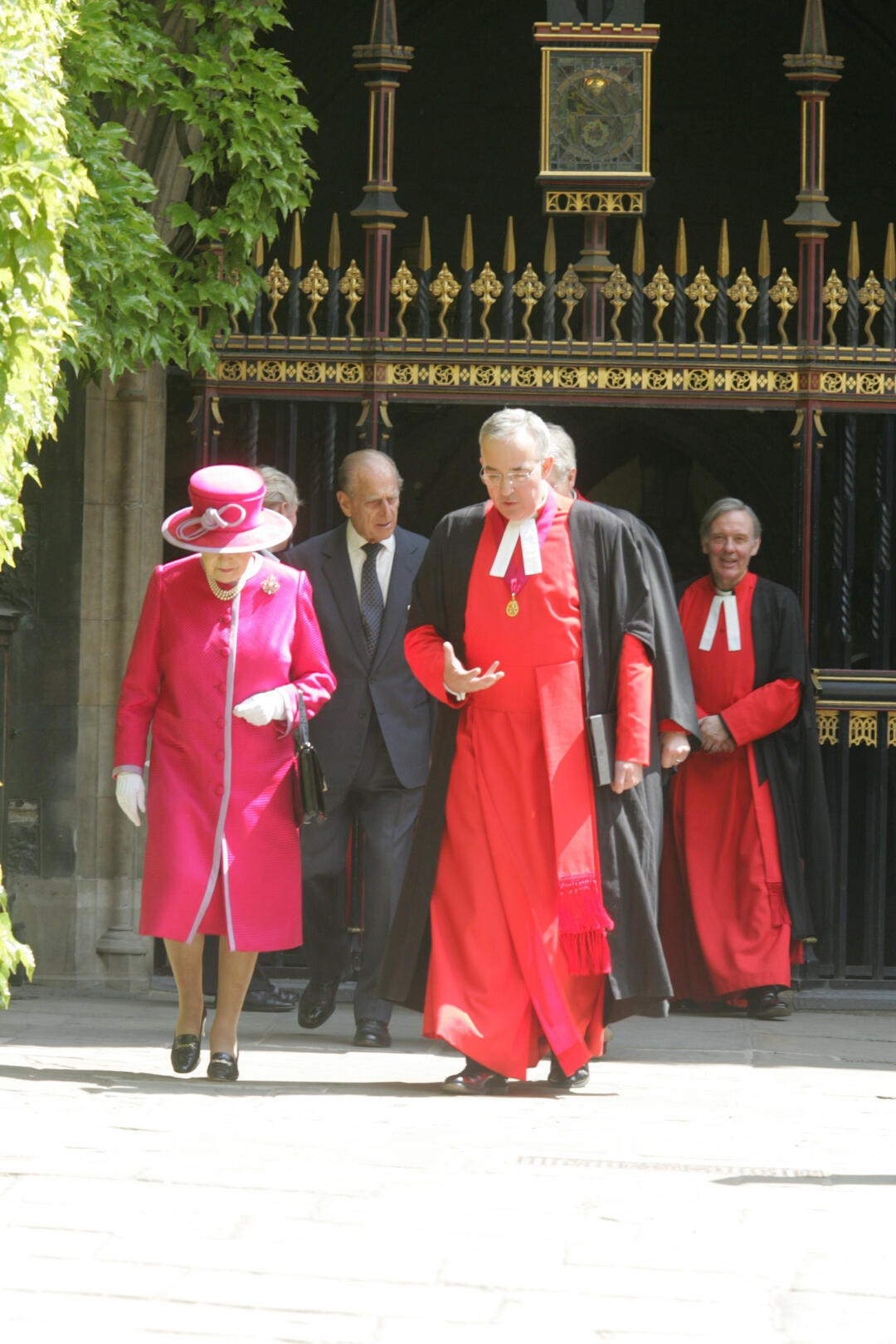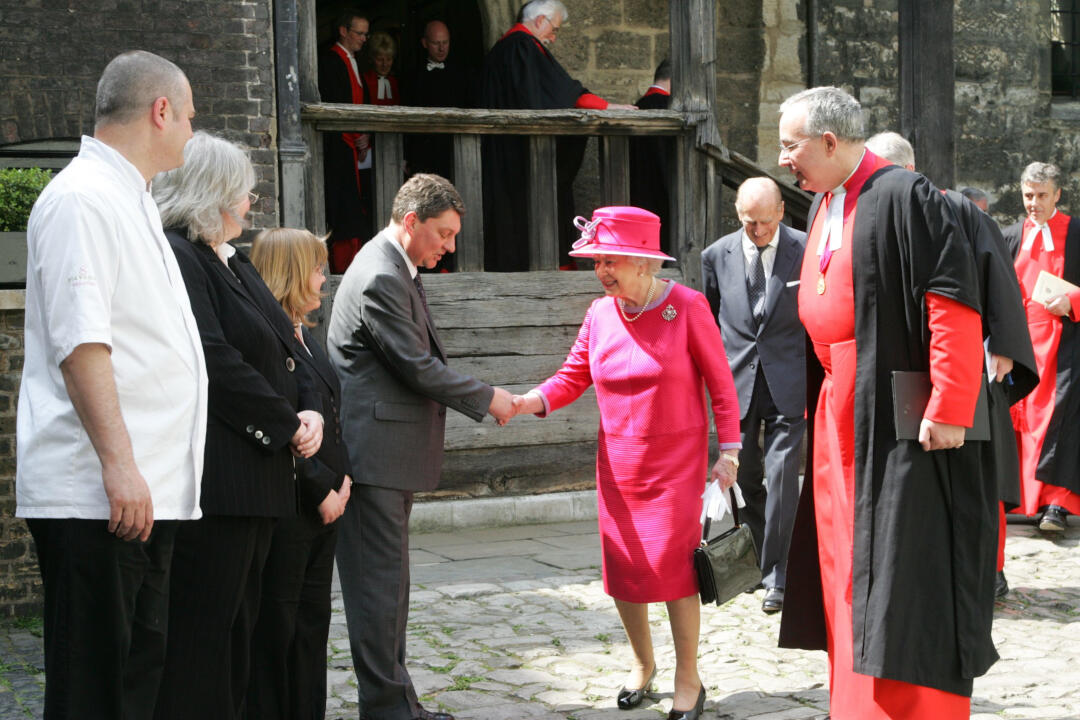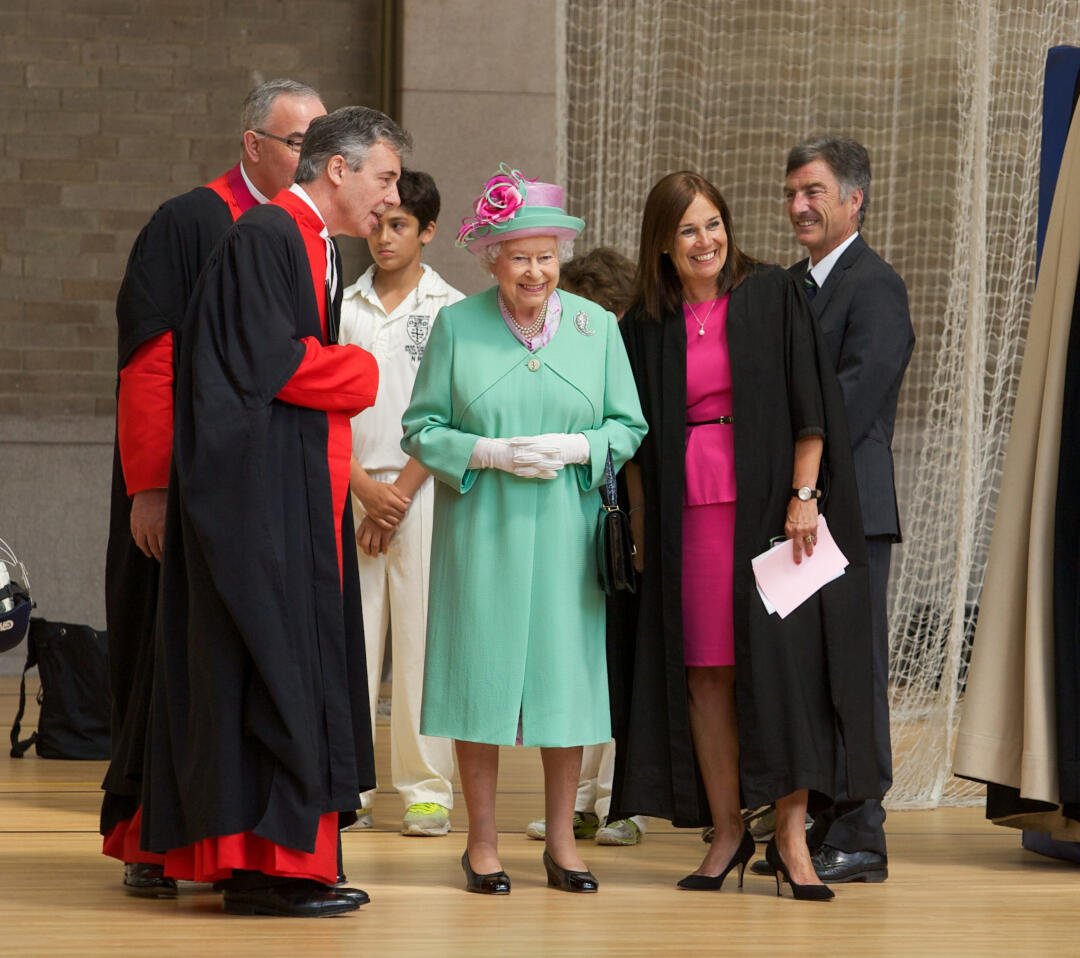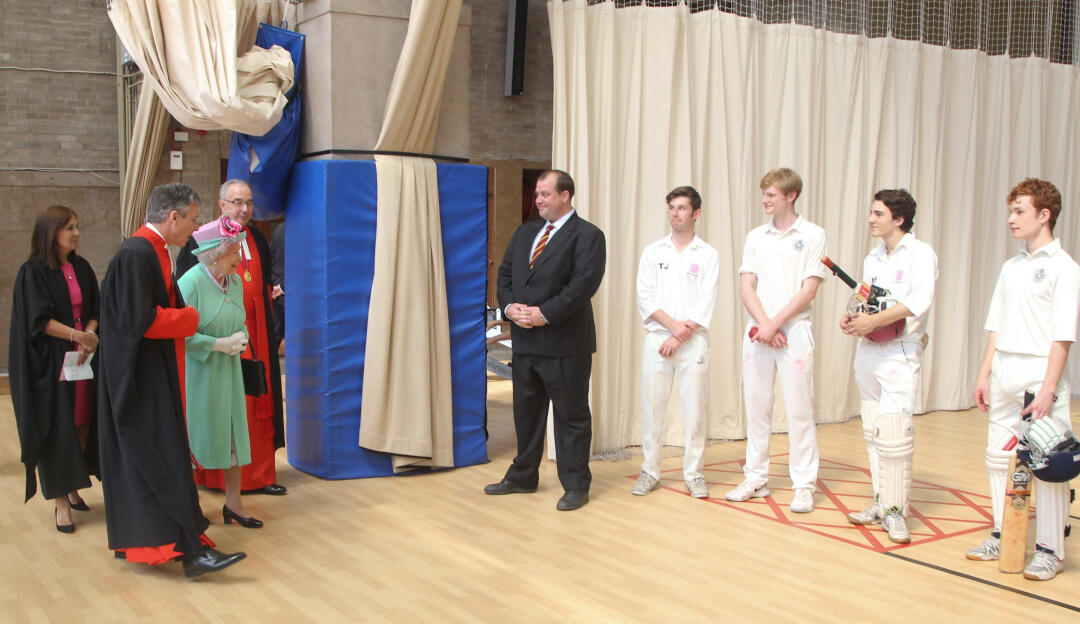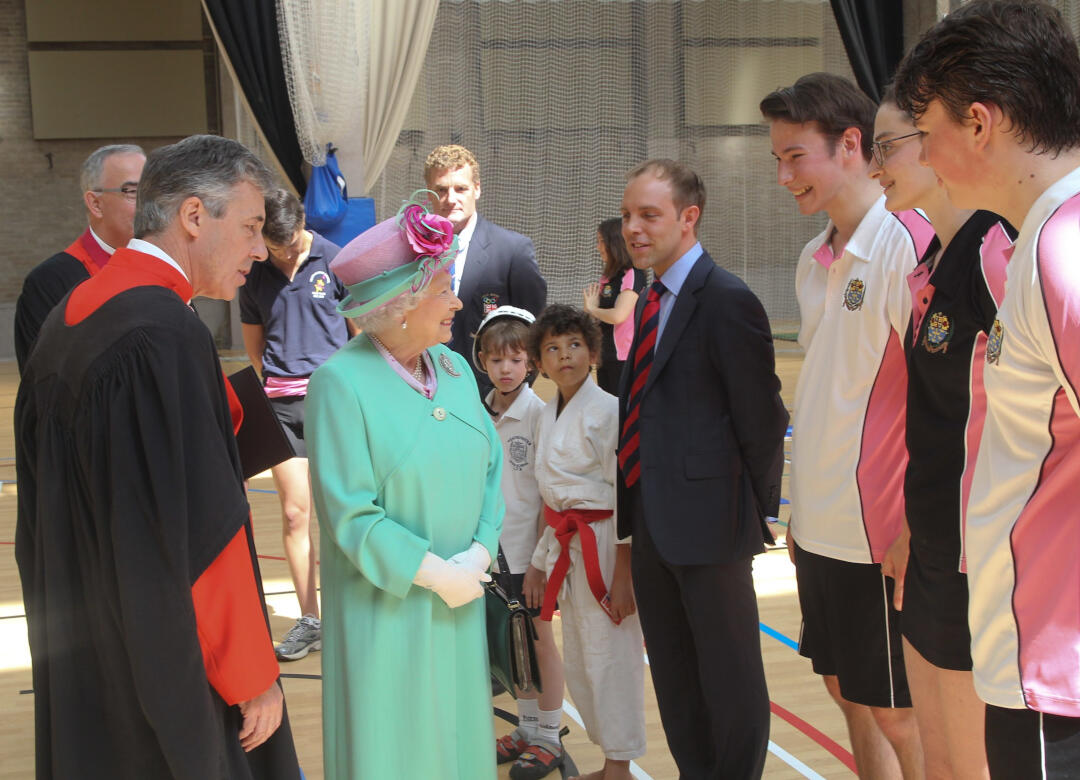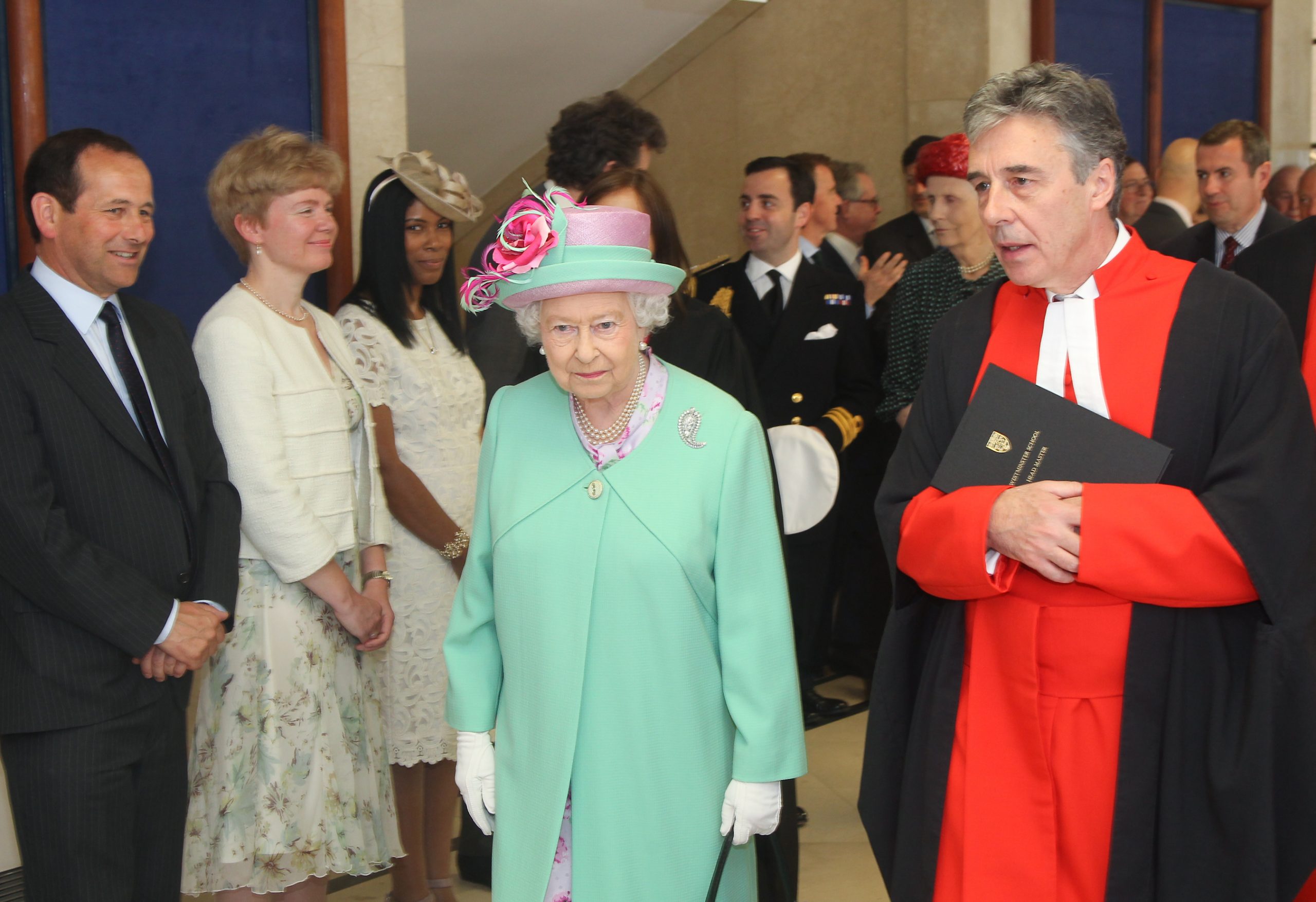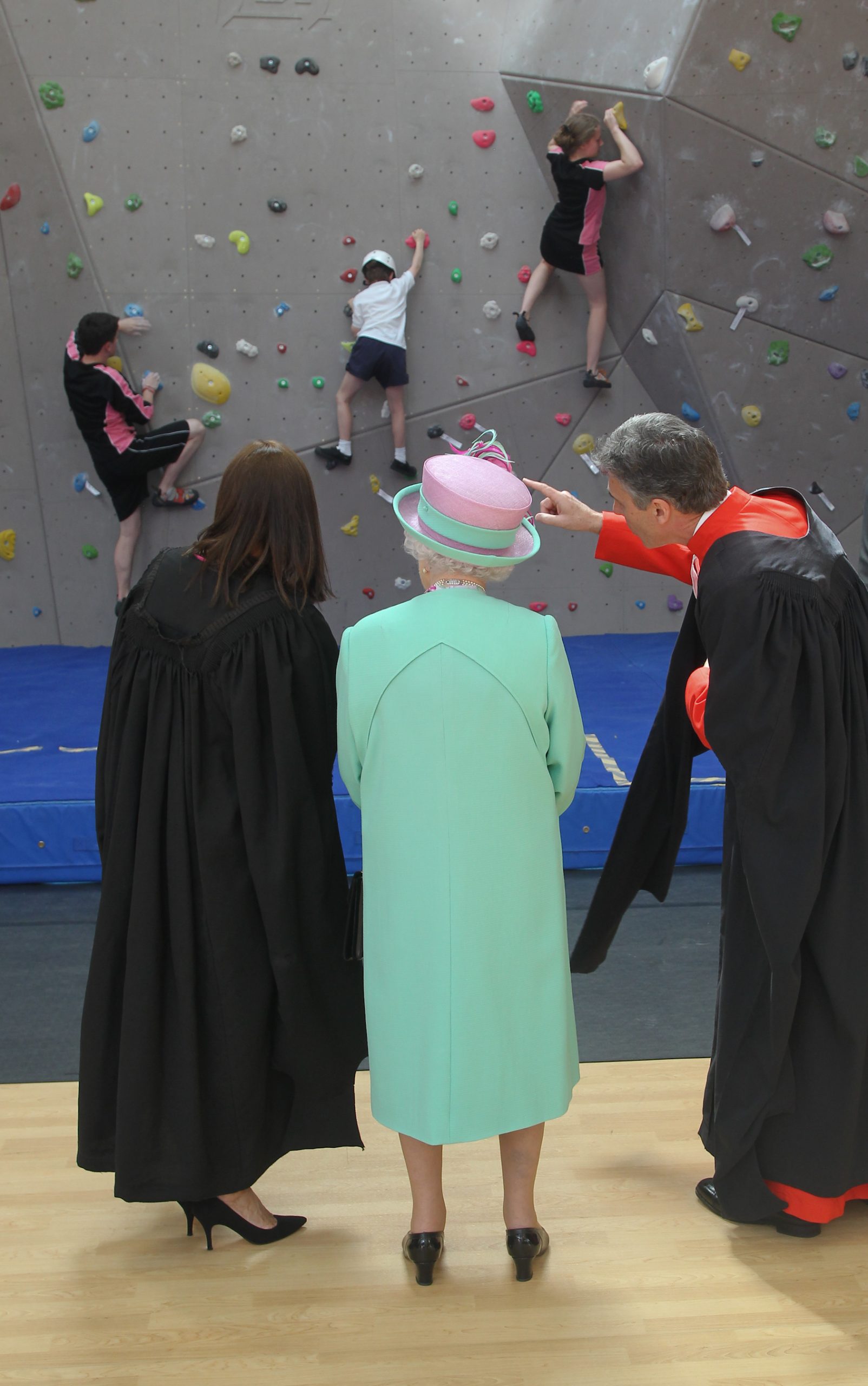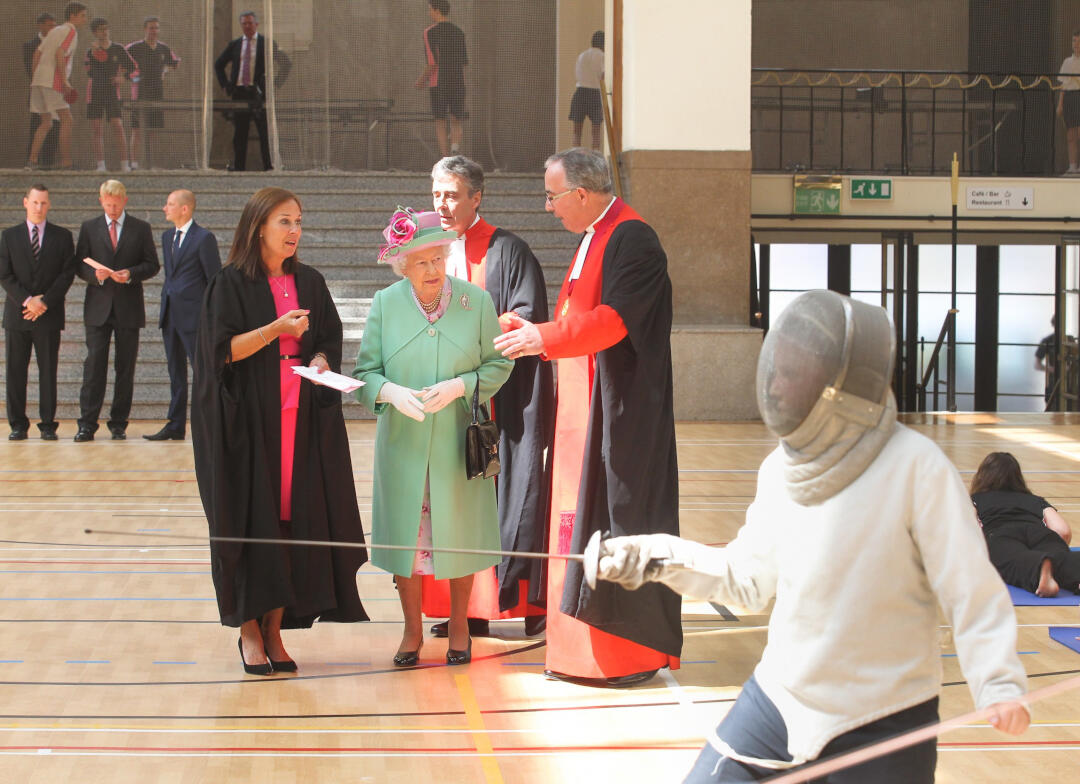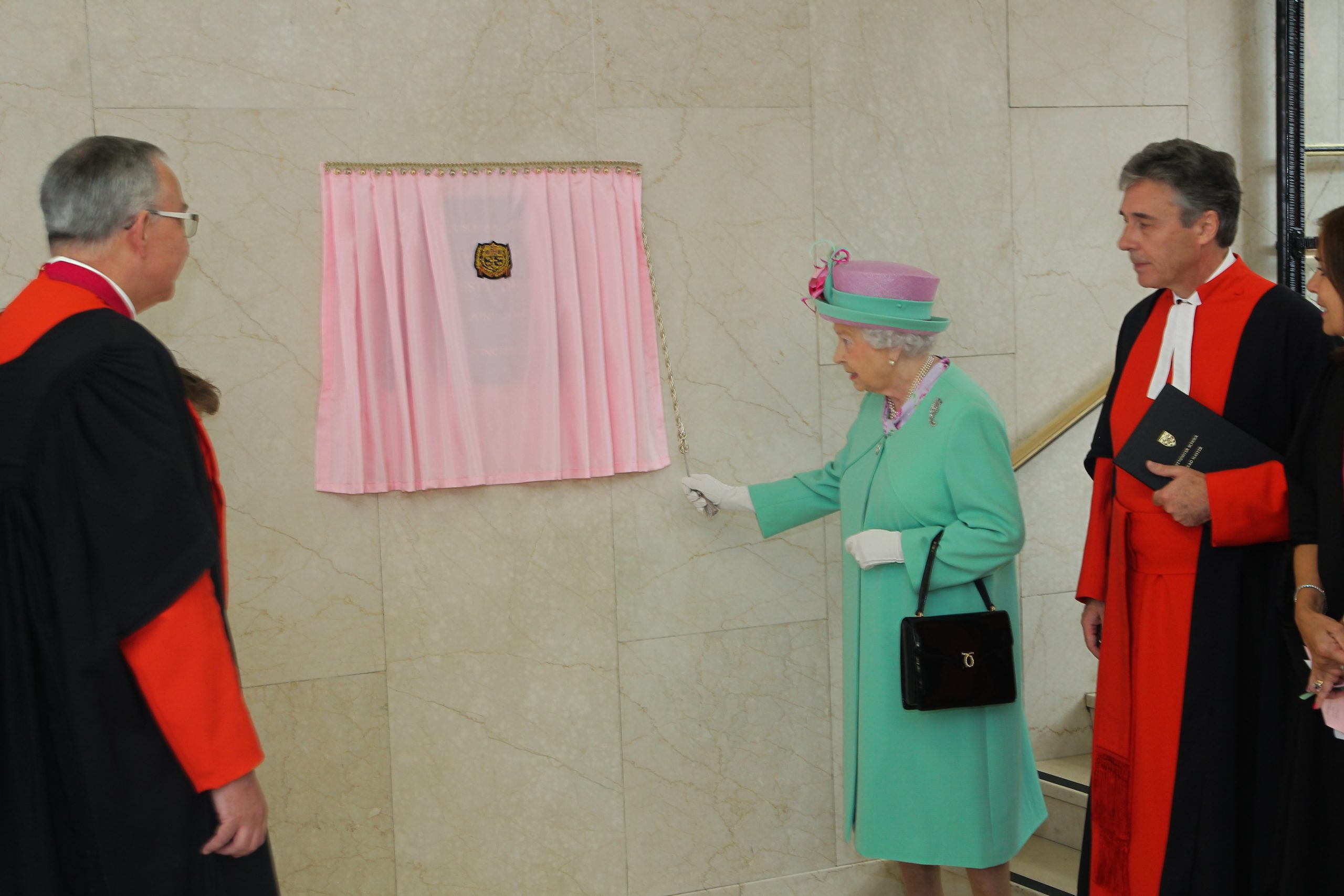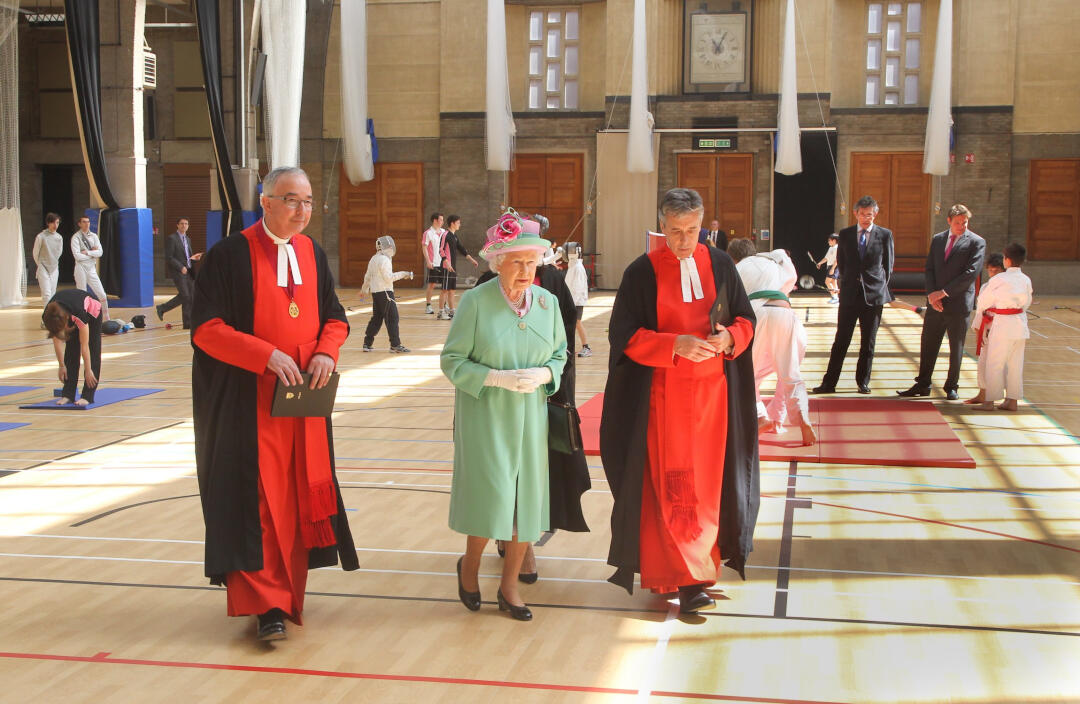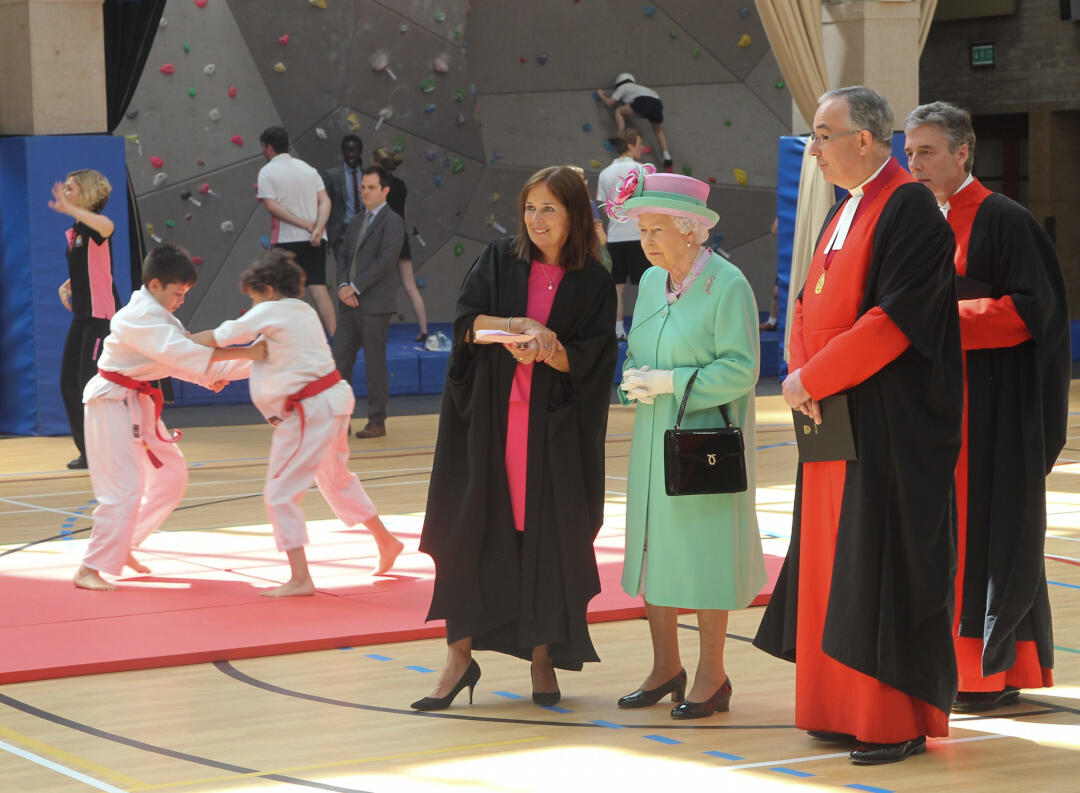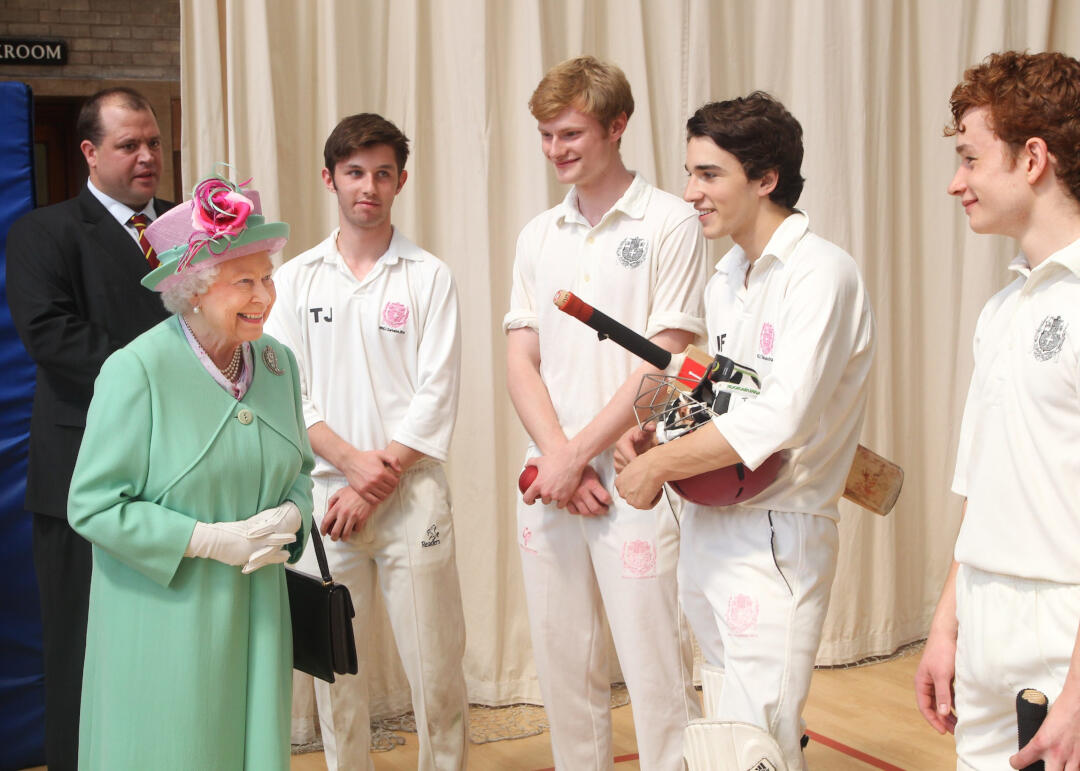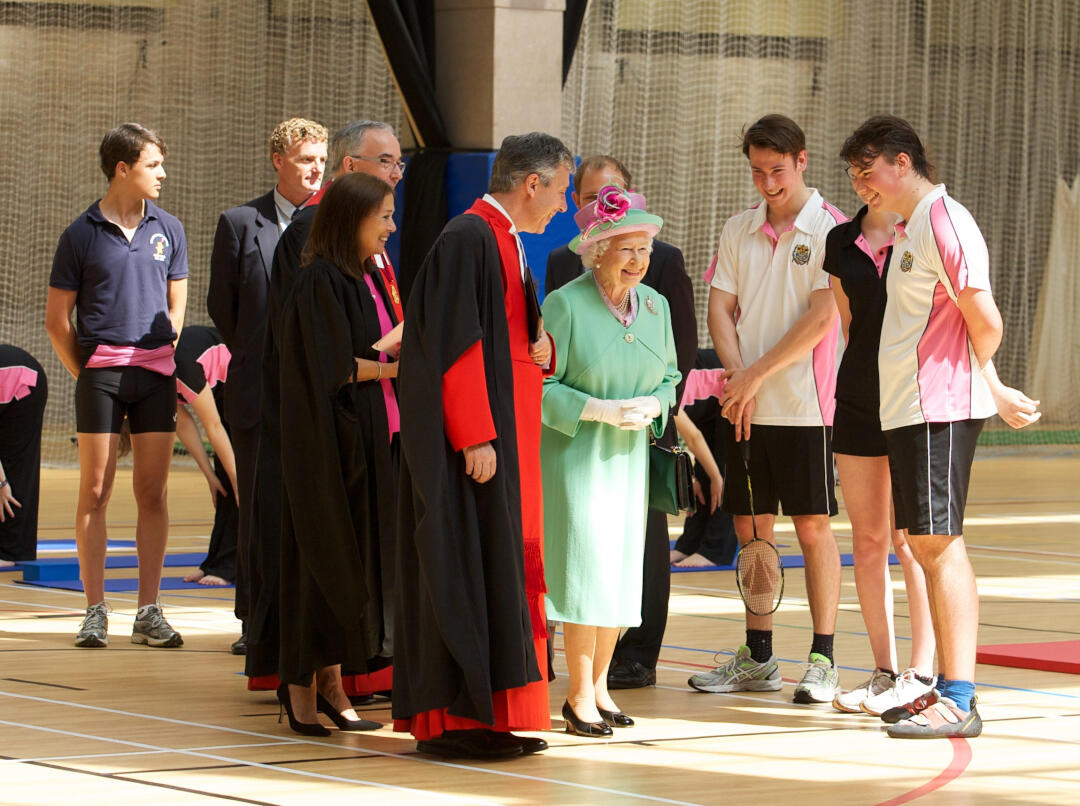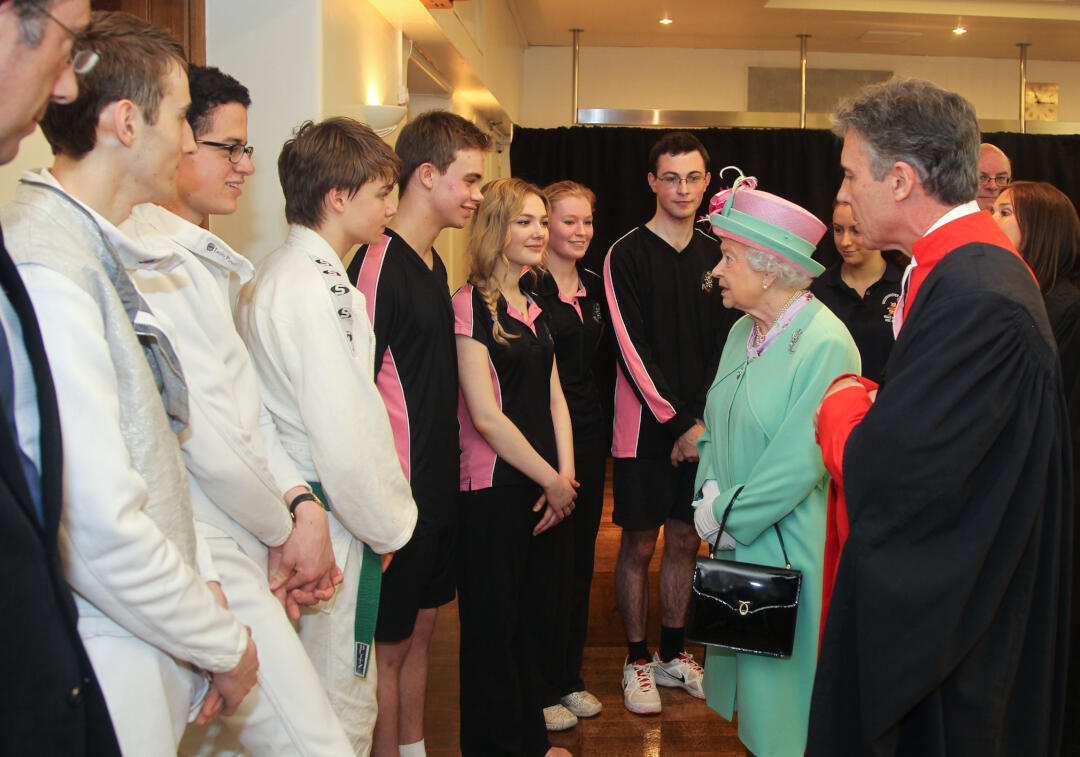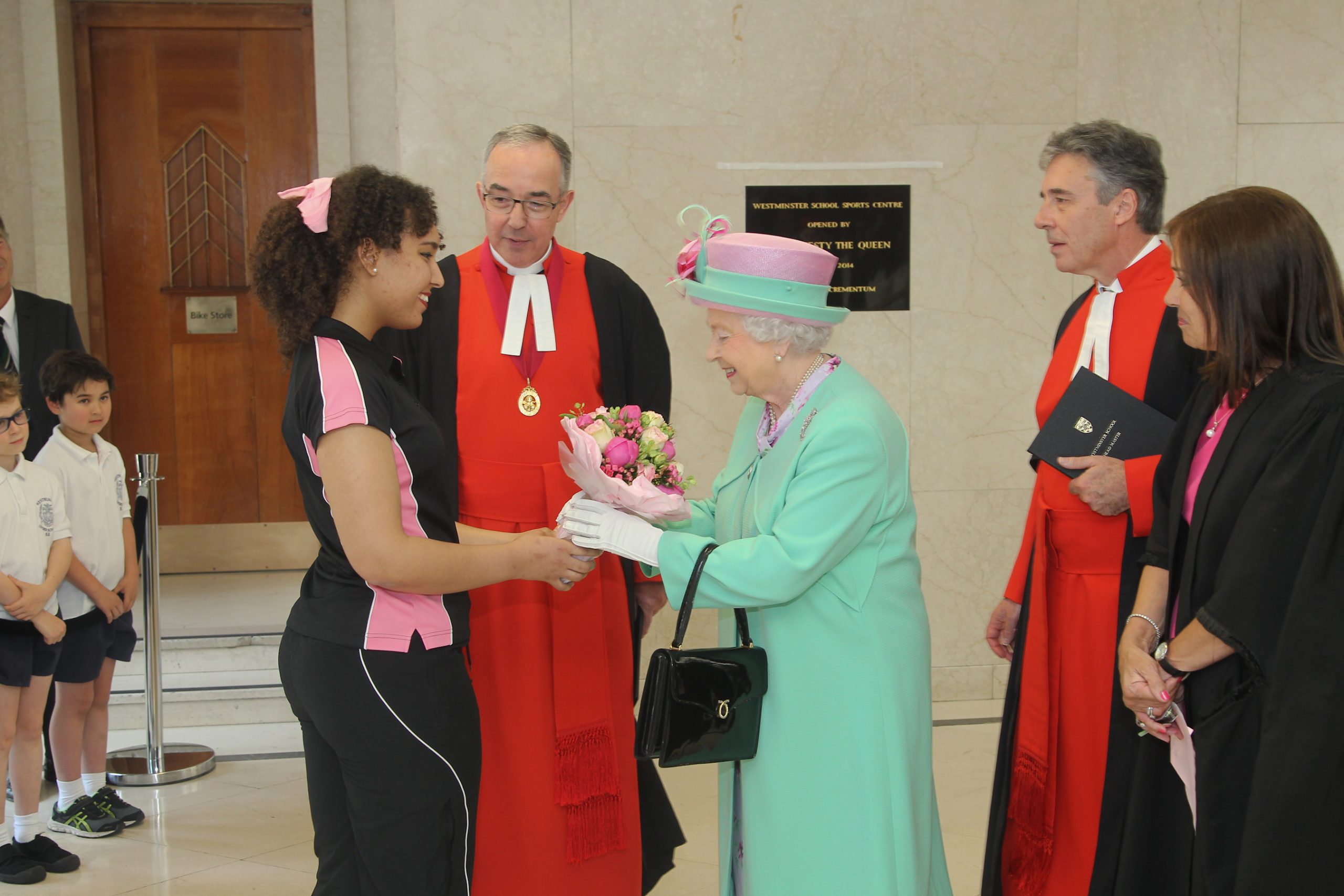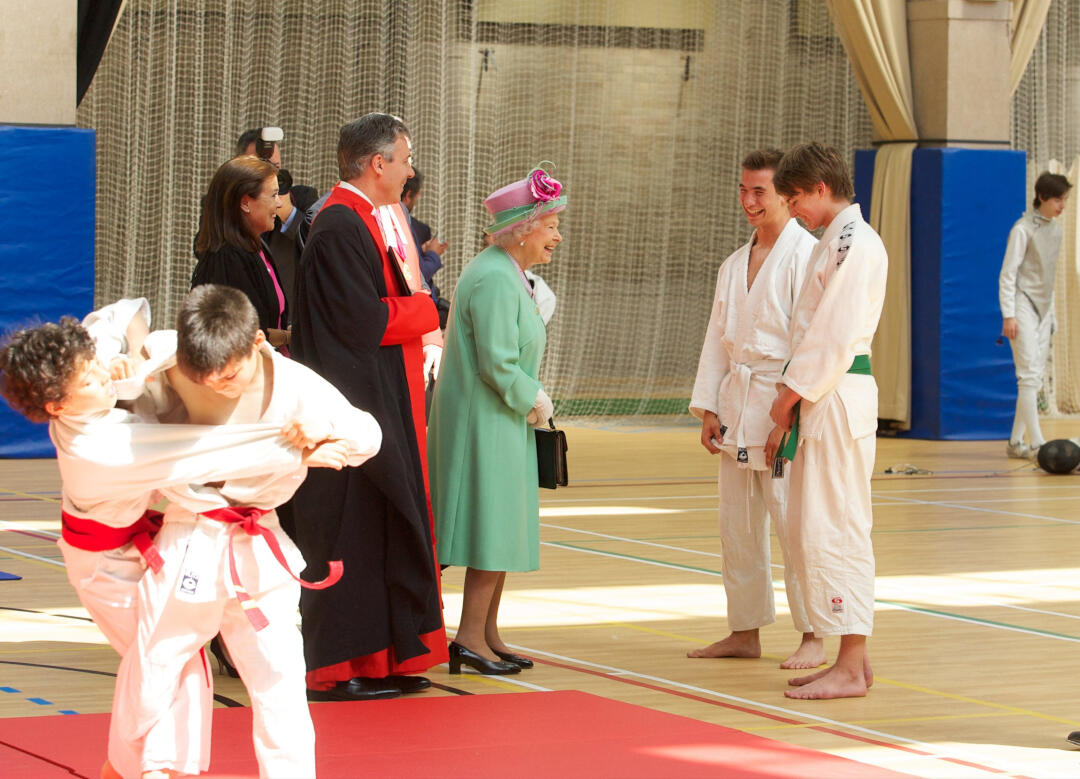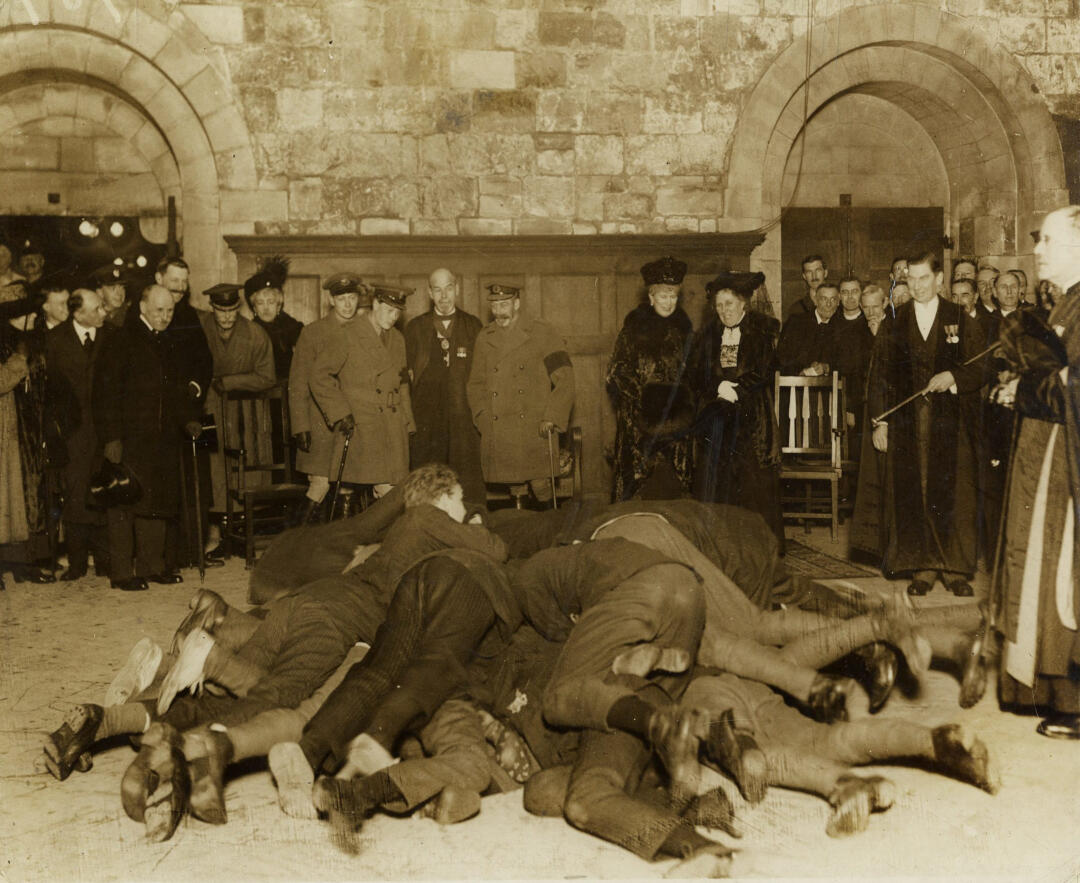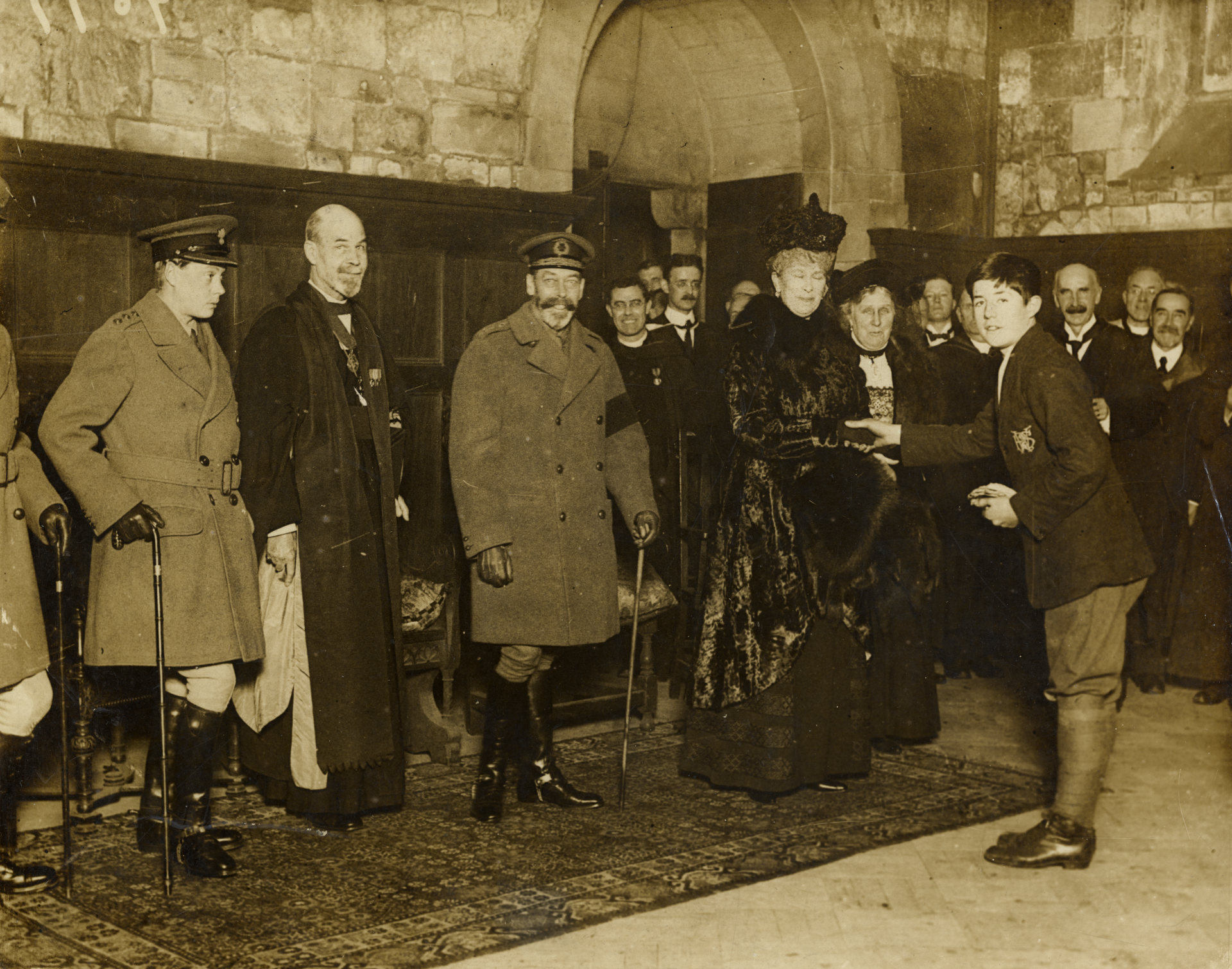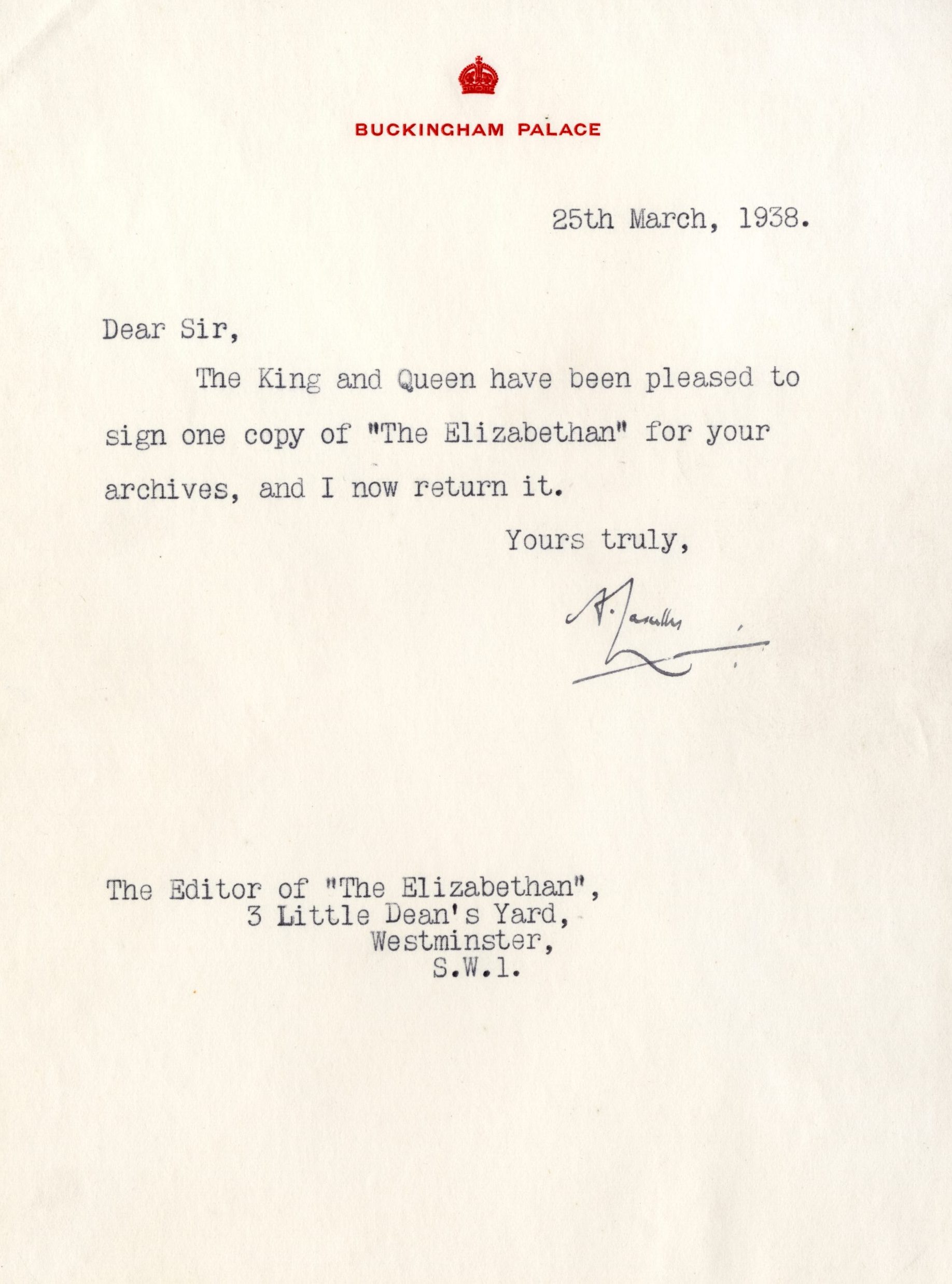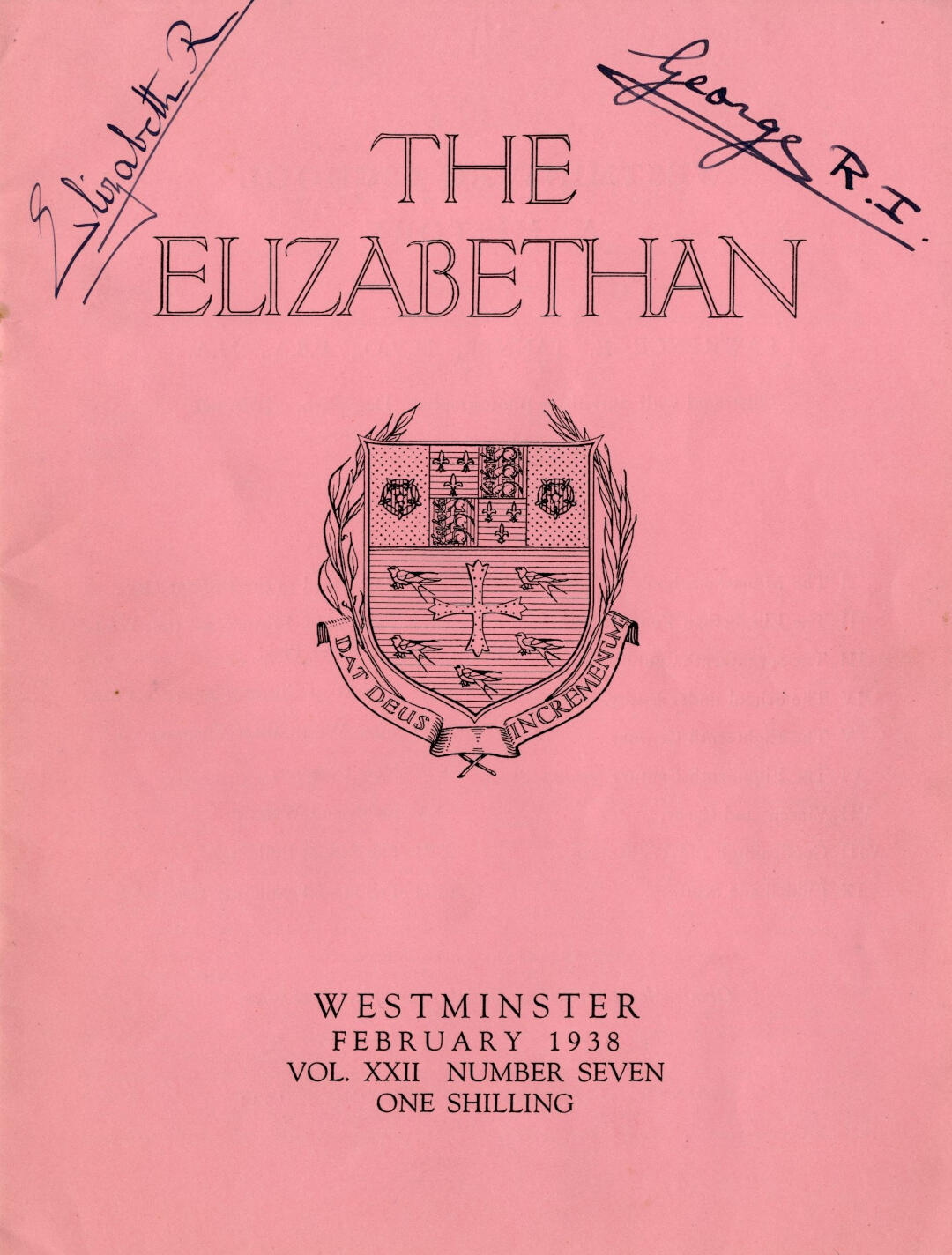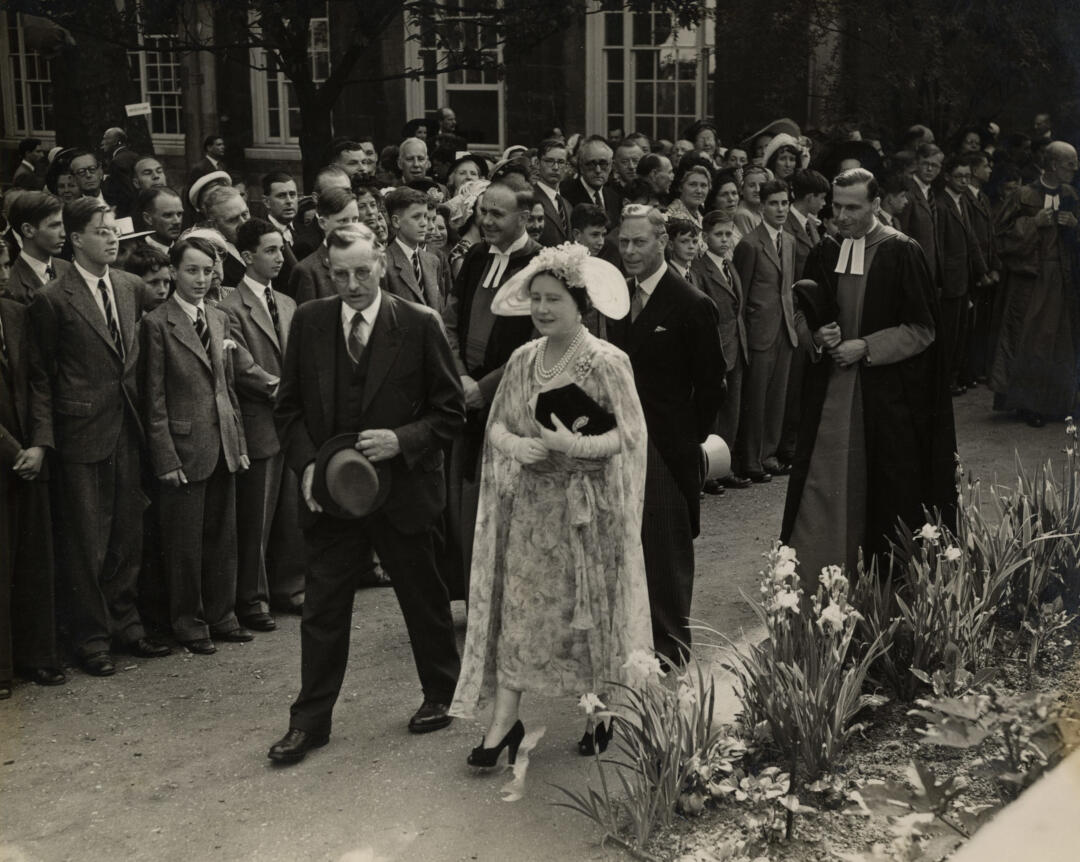November 11 1960
The Queen’s first visit to the school in 1960 is remembered in the pages of The Elizabethan as well rehearsed and faultlessly delivered. She attended a service in Westminster Abbey, met with Housemasters in the Jerusalem Chamber and maintenance staff at College Hall, before proceeding up School. There she unveiled an inscription on the Shell in a reconstructed School following the significant bomb damage sustained during World War Two. The inscription is an acrostic of ‘Semper Eadem’ [always the same] and reads:
Scorpius egregiam molem percussit Elissae:
Rursus Elissa aedes dedicat egregias.
[Elissa's hall, destroyed by fire and sword,
Again Elissa dedicates, restored.]
Both the Queen and Duke of Edinburgh drank sherry with the Head Master, looked on as the pupils’ Busby Film Group filmed in Yard, and departed the school amid a crowd of enthusiastic applause.
June 8 1988
In 1988, the Queen opened the Robert Hooke Science Centre, named after the 17th-century Old Westminster scientist, and a desperately needed update to the former facilities in Sutcliff’s on Great College Street. She toured the laboratories, seemingly very interested in the pupils’ experiments, and also visited the main school site. Echoing Latin verse compositions 16th-century pupils had dedicated to Elizabeth I, new poems were penned for Elizabeth II. Composed in English rather than Latin, they can be found in the 1989 edition of The Elizabethan, alongside an entertaining account of the Royal visit by an opinionated Queen’s Scholar ‘doing [his] best to swallow all [his] Republican sympathies’.
May 21 2010
The 450th anniversary of the refoundation of Westminster School involved a busy programme of events, with a visit from the Queen at the heart of proceedings. She attended a service in Westminster Abbey and a lunch at College Hall but perhaps most notably, she unveiled a statue of Elizabeth I, who is celebrated as the School’s foundress. It cuts a controversial figure in Little Dean’s Yard, eight feet high and constructed from brass, marble and stone, and stands as a reminder of the patronage of Elizabeth I, the 450th anniversary celebrations, and the visit from the Queen.
June 12 2014
The Queen’s last visit to the School was to open the Westminster School Sports Centre in June 2014. The 6,000m2 building was previously a Royal Horticultural Society exhibition hall but now houses facilities for pupils’ Station choices. The Queen unveiled a plaque and was presented with a bouquet of flowers before speaking with pupils. She was reportedly very pleased with the presentation of a leather-bound photograph album, made by pupils in the bookbinding workshop, containing image of royal visits dating back to the time of George V.
Before Elizabeth II
Westminster School’s royal links date back to King Henry VIII. After the dissolution of Benedictine monastery at Westminster, he refounded the Abbey’s Grammar School and established a Royal Charter providing for 40 King’s Scholars to receive an education. Following the brief restoration of the monastery at Westminster Abbey under Mary I, Elizabeth I issued a new charter and supported the School. She attended her scholars’ annual Latin Play and encouraged donations to the school from her wealthy courtiers.
The longest serving Westminster School Head Master (1638 -1695), Dr Richard Busby, was a staunch royalist. He led pupils in prayers for the King’s soul during Charles I’s execution. When, following the monarchy’s restoration, Charles II visited the school, Dr Busby broke protocol by neglecting to remove his hat. When the King asked him why, Busby explained that he could not have pupils believing there to be a higher authority in the school room than the Head Master. It was a remark that amused the King, who had a wooden throne carved for Busby as a gift, which is still used by current Head Masters at the annual Election Dinner.
Monarchs continued to visit Westminster School to attend performances of the Latin Play or to watch the annual Pancake Greaze, but the events most relished by the pupils were Coronations. The scholars have likely attended every royal coronation since the refounding of the School and they have a unique role to play in the ceremony: when the crown touches the head of the monarch, the scholars thrice proclaim ‘Vivat Rex’ or ‘Vivat Regina’. For the first coronation after the long reign of Queen Victoria, that of Edward VII, the Head Master had to attend the Court of Claims to advocate for the right of the scholars to maintain their role in the ceremony. He was successful, but the pupils were moved from prime seats in a gallery to the Triforium due to the expanded scale of the coronation. From here, they have watched every subsequent coronation and had their part codified in Parry’s coronation anthem, I was Glad.
Old Westminster and former scholar John Oliver recalls of the coronation of our current queen:
"Because we were positioned so high in the Abbey, we had room to move around to get a better view. I knew as the crown was placed on the Queen’s head that it was a dramatic moment I would remember for the rest of my life. She was beautiful and impressive and the whole thing was just amazing."
Royal events, be they visits to the school itself or events in Westminster Abbey, have always played an important part in the School's history and they continue to be celebrated and cherished by all the pupils and members of staff involved.
